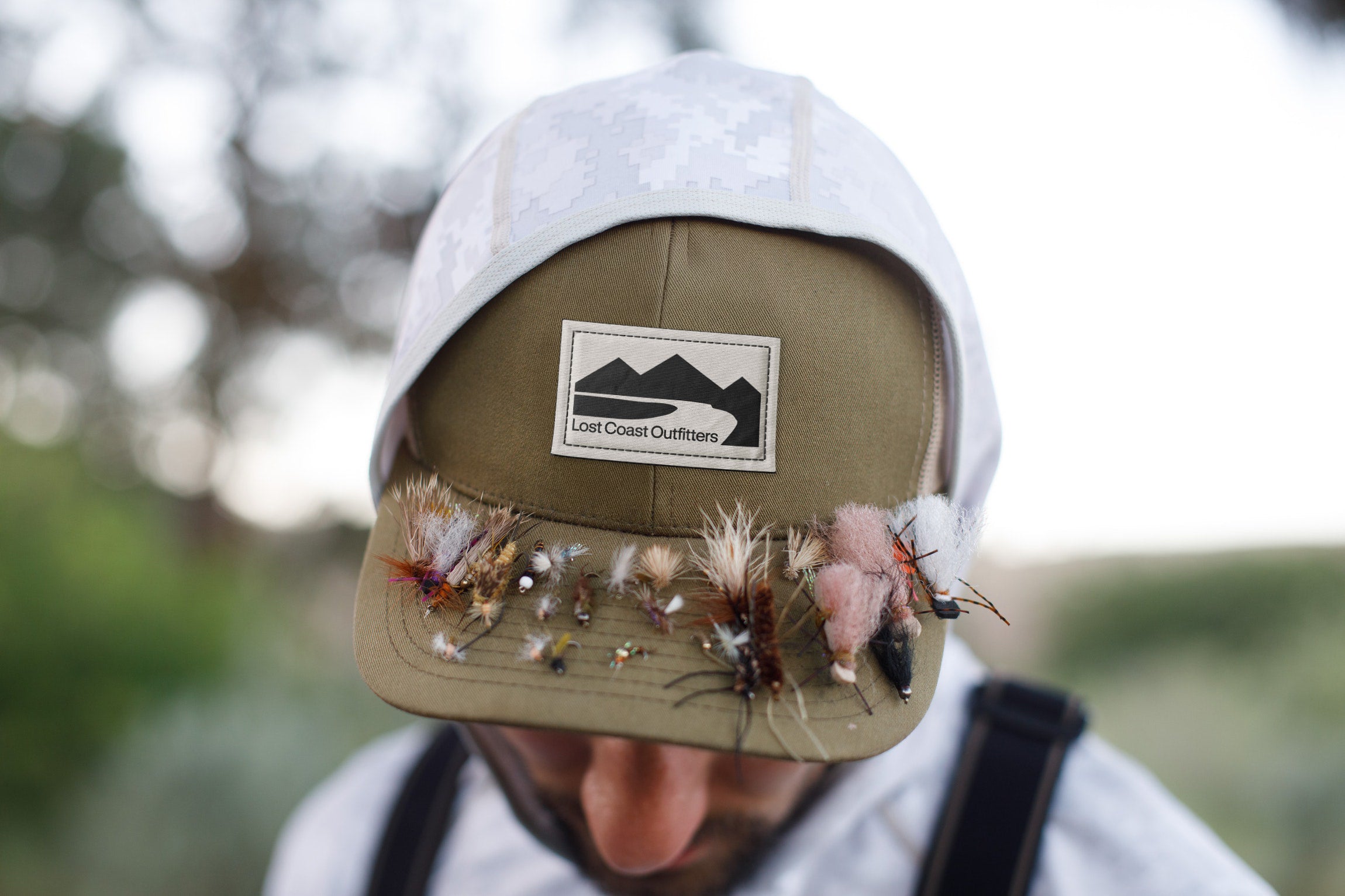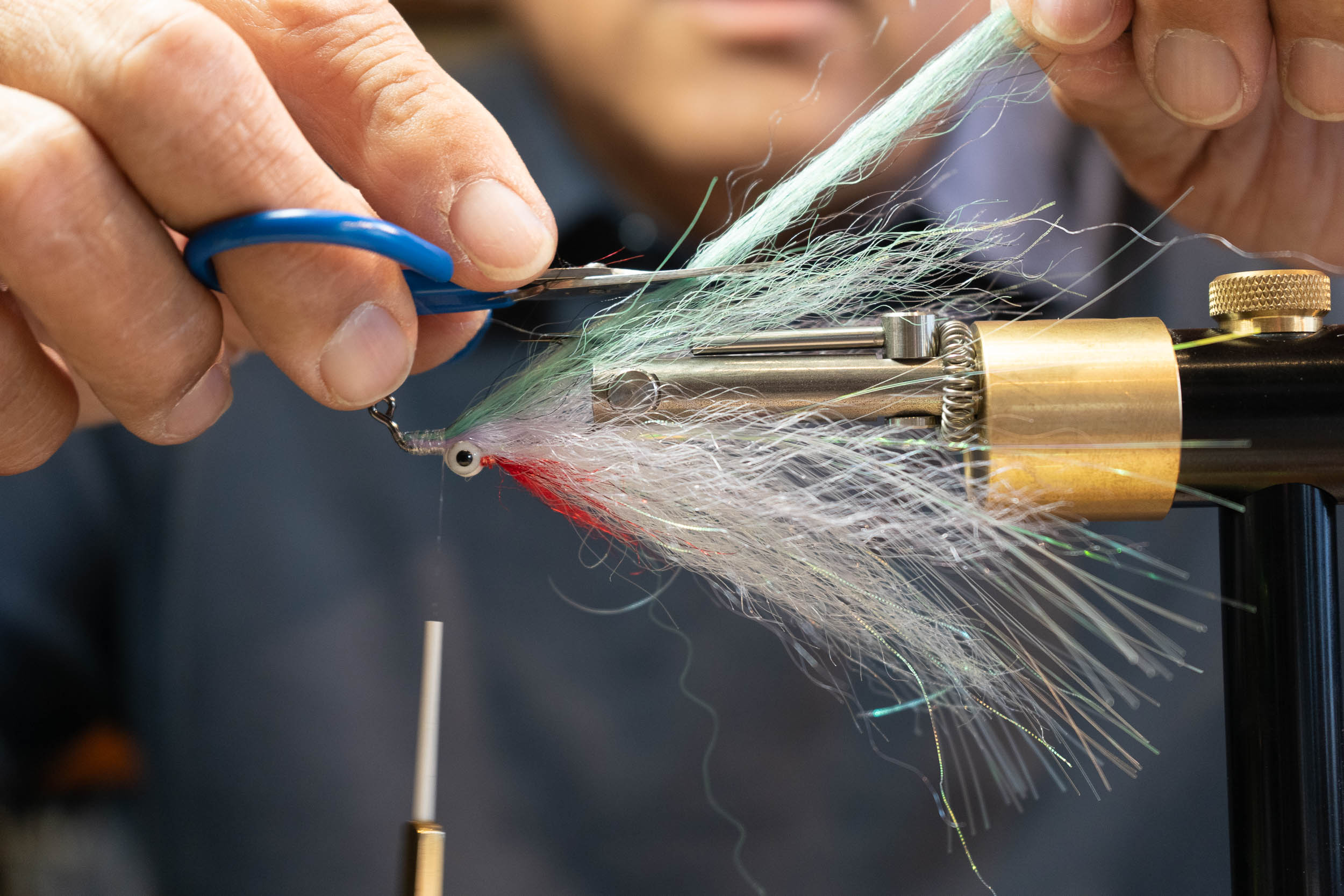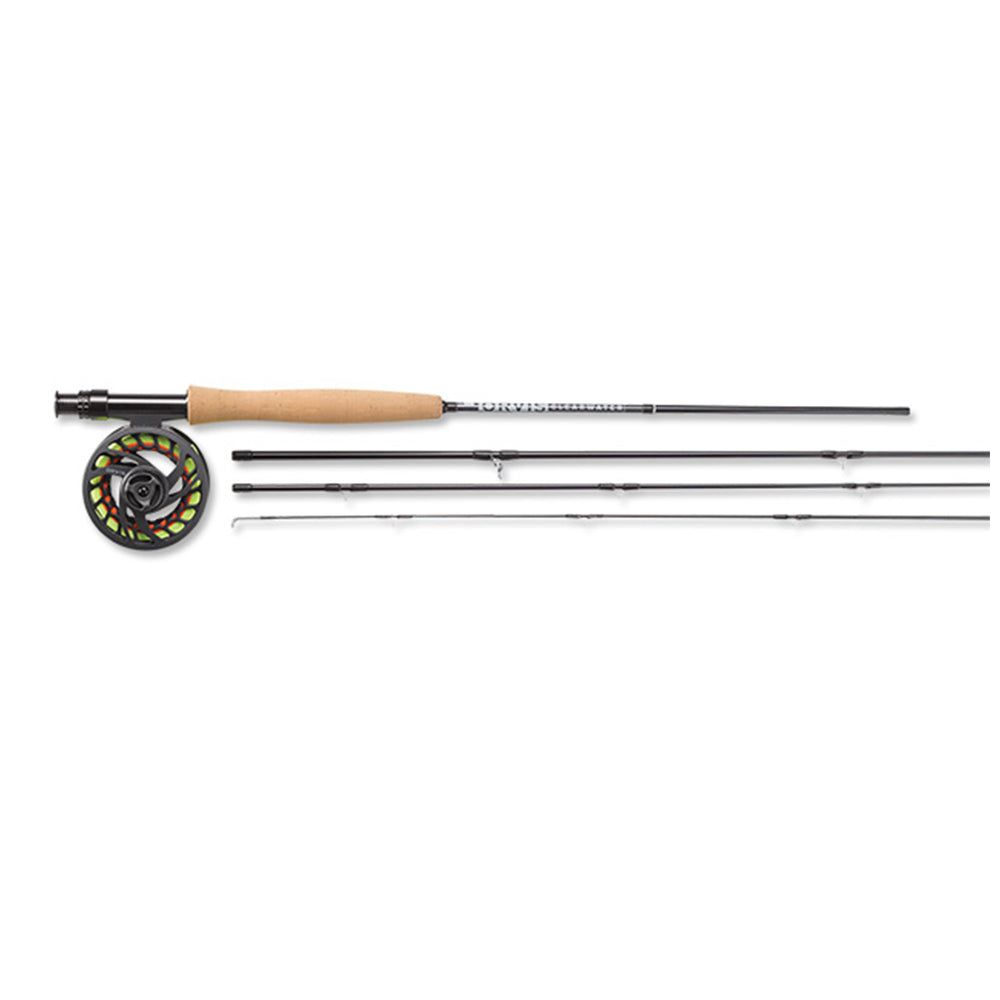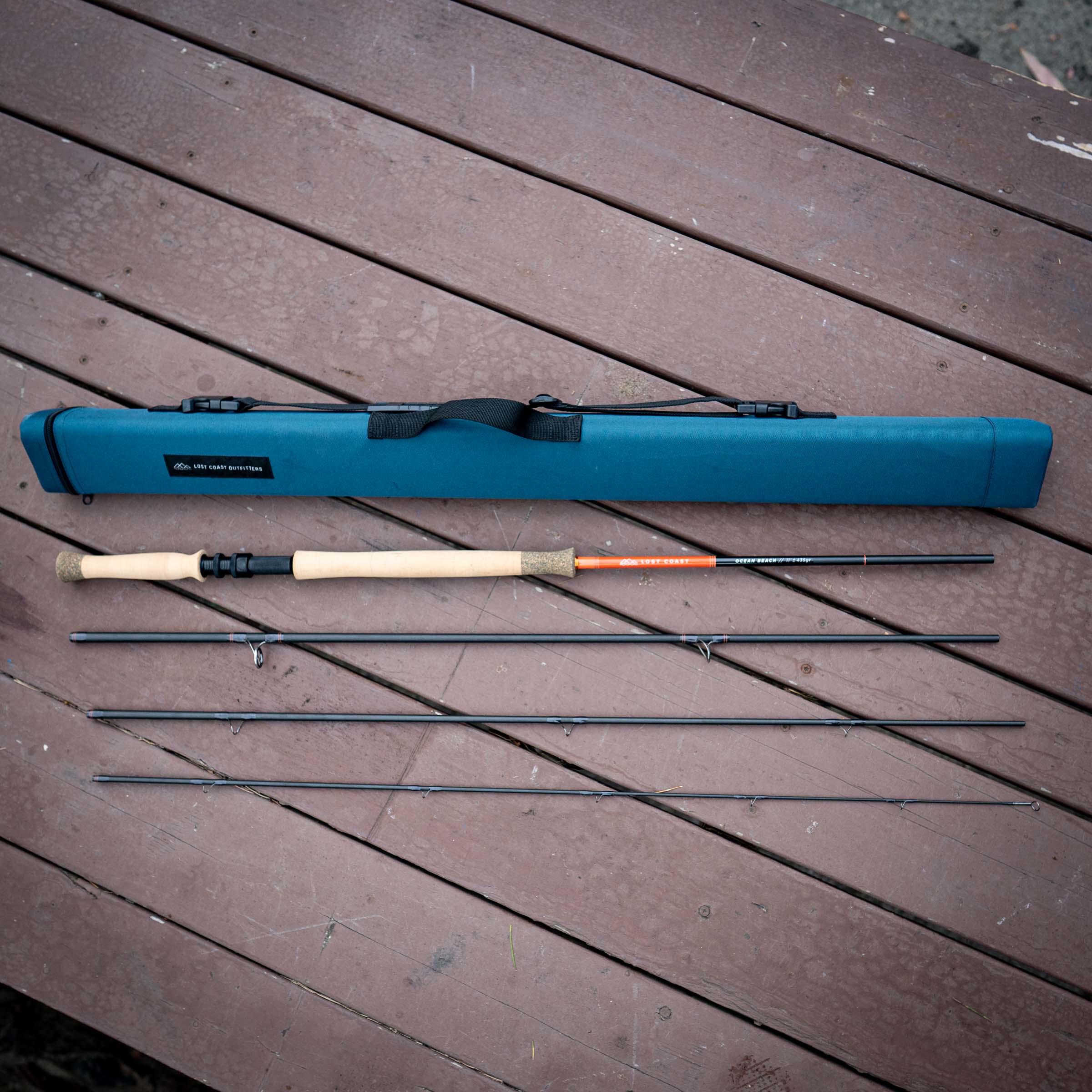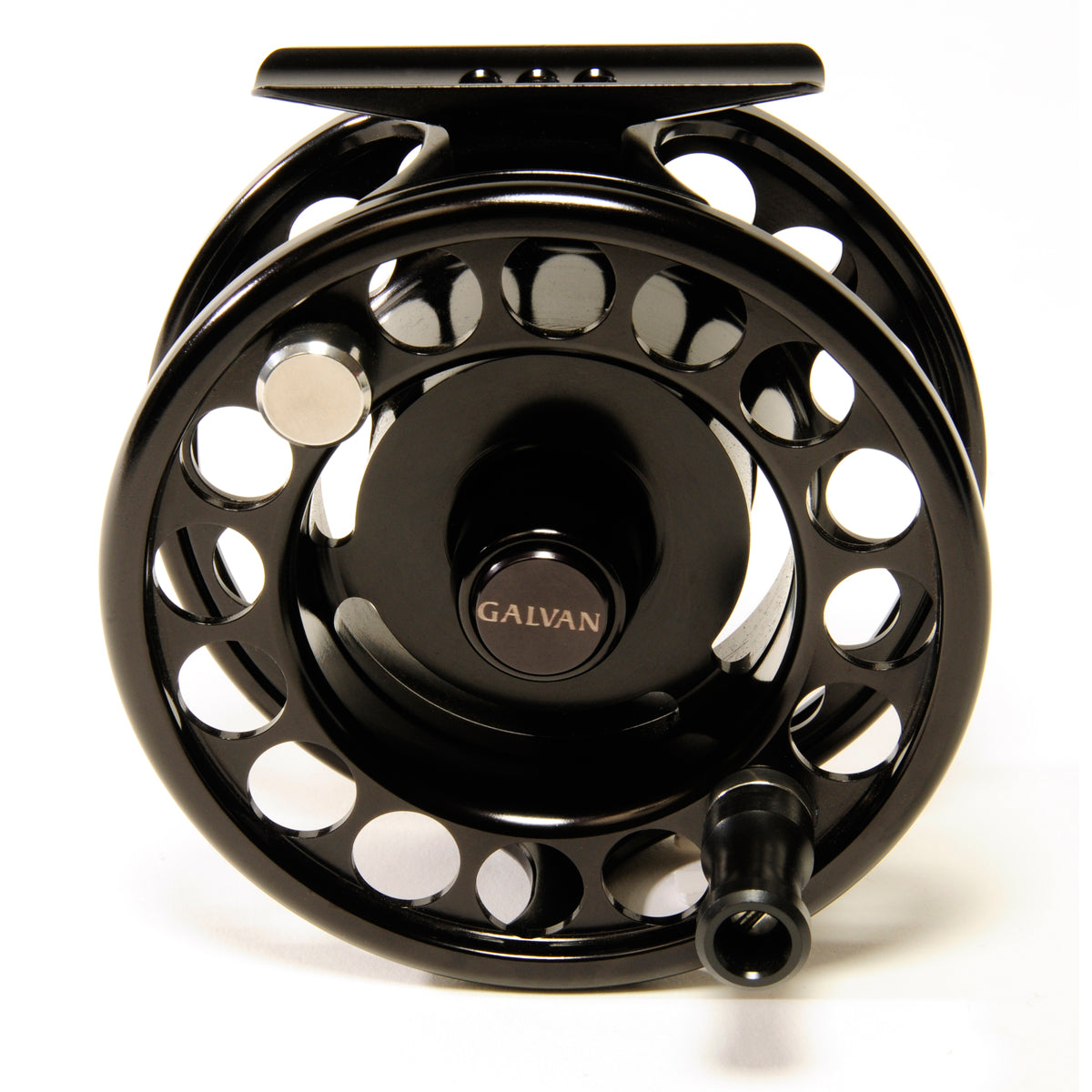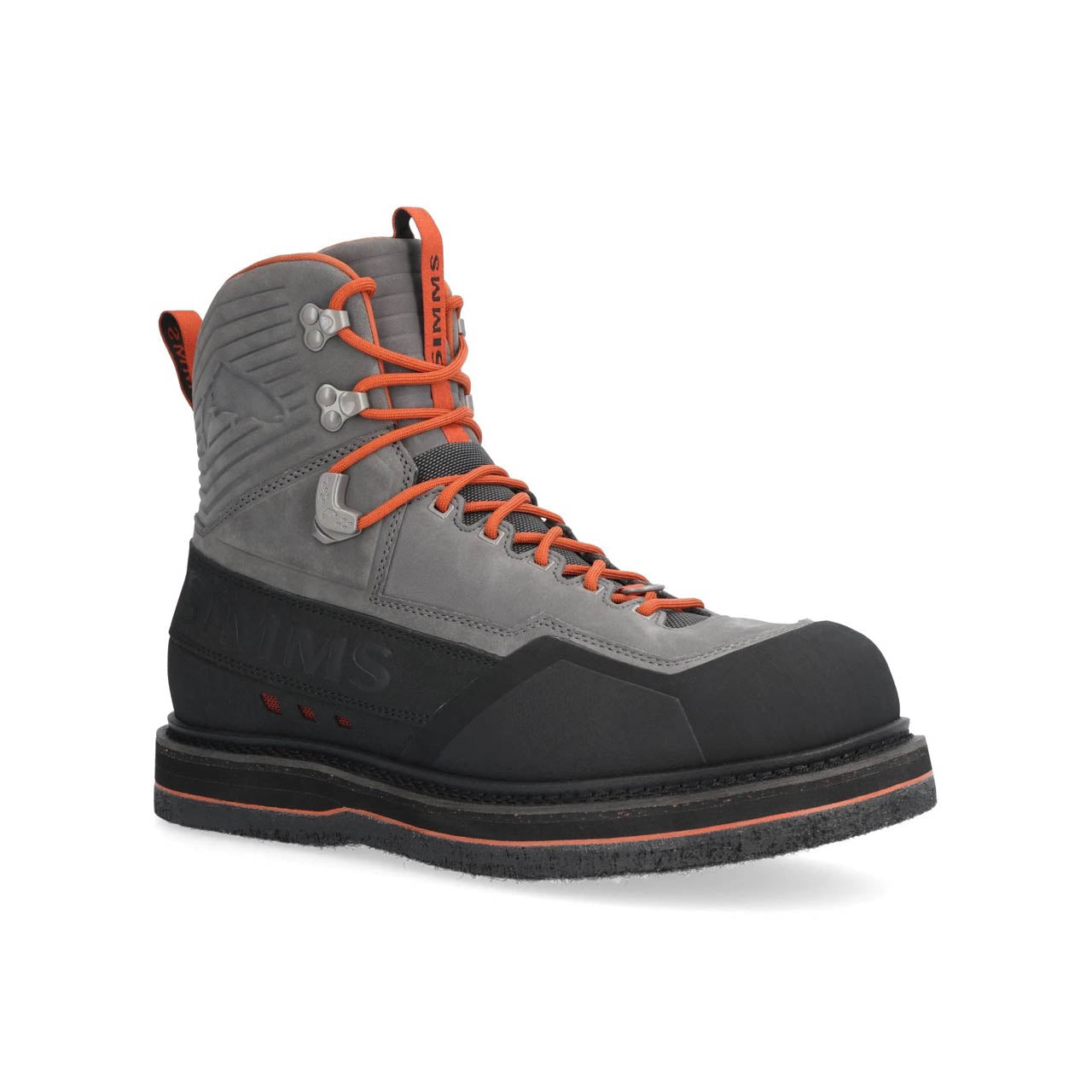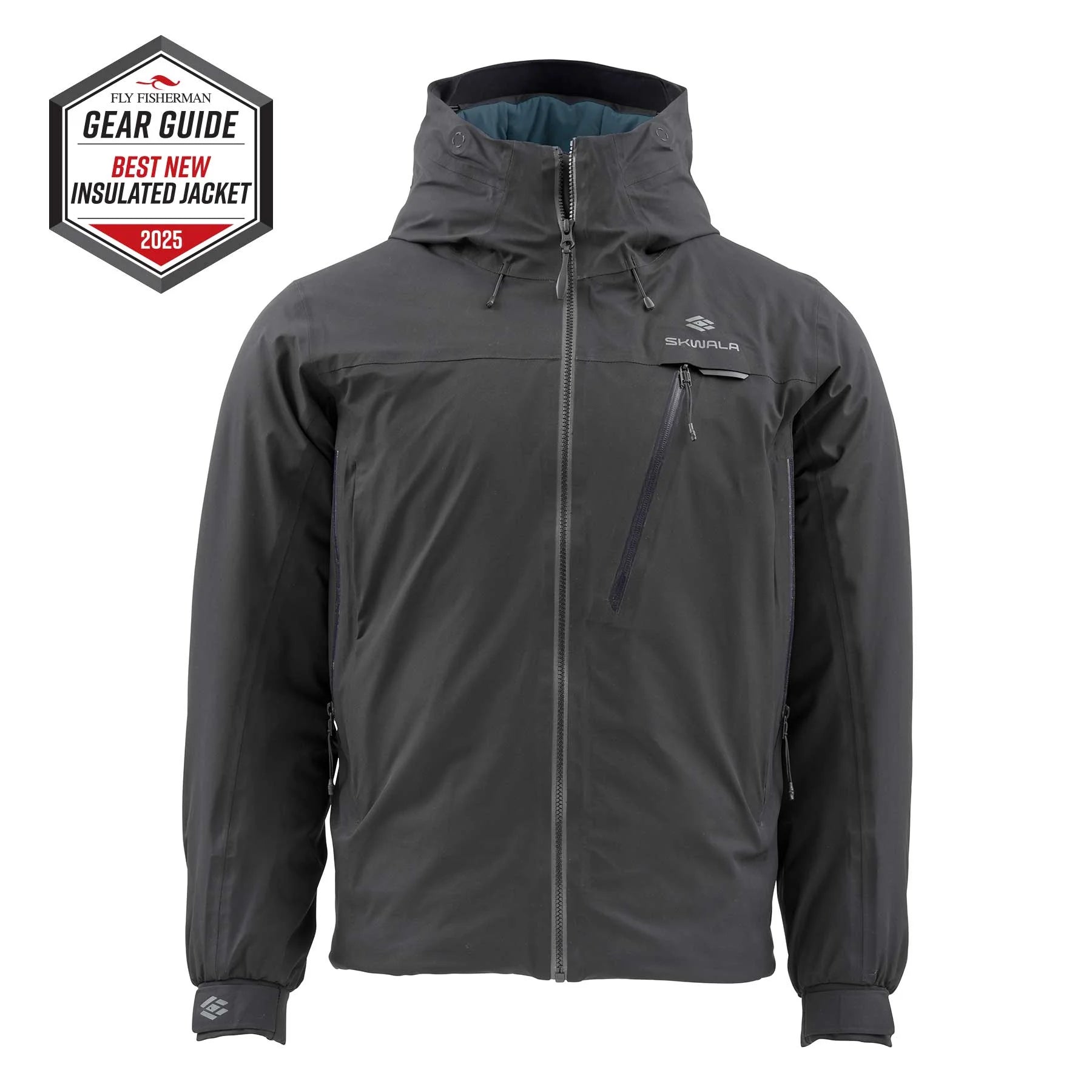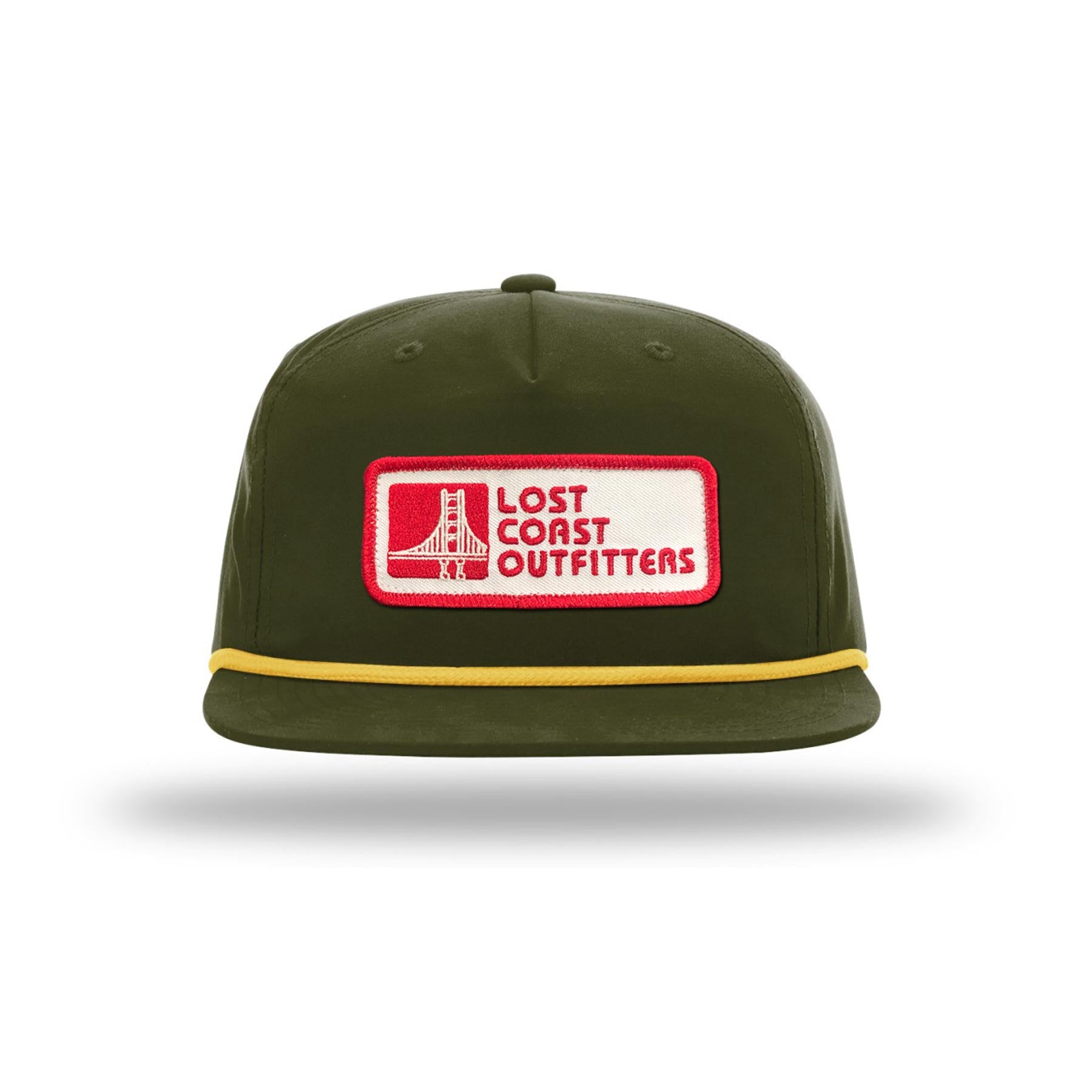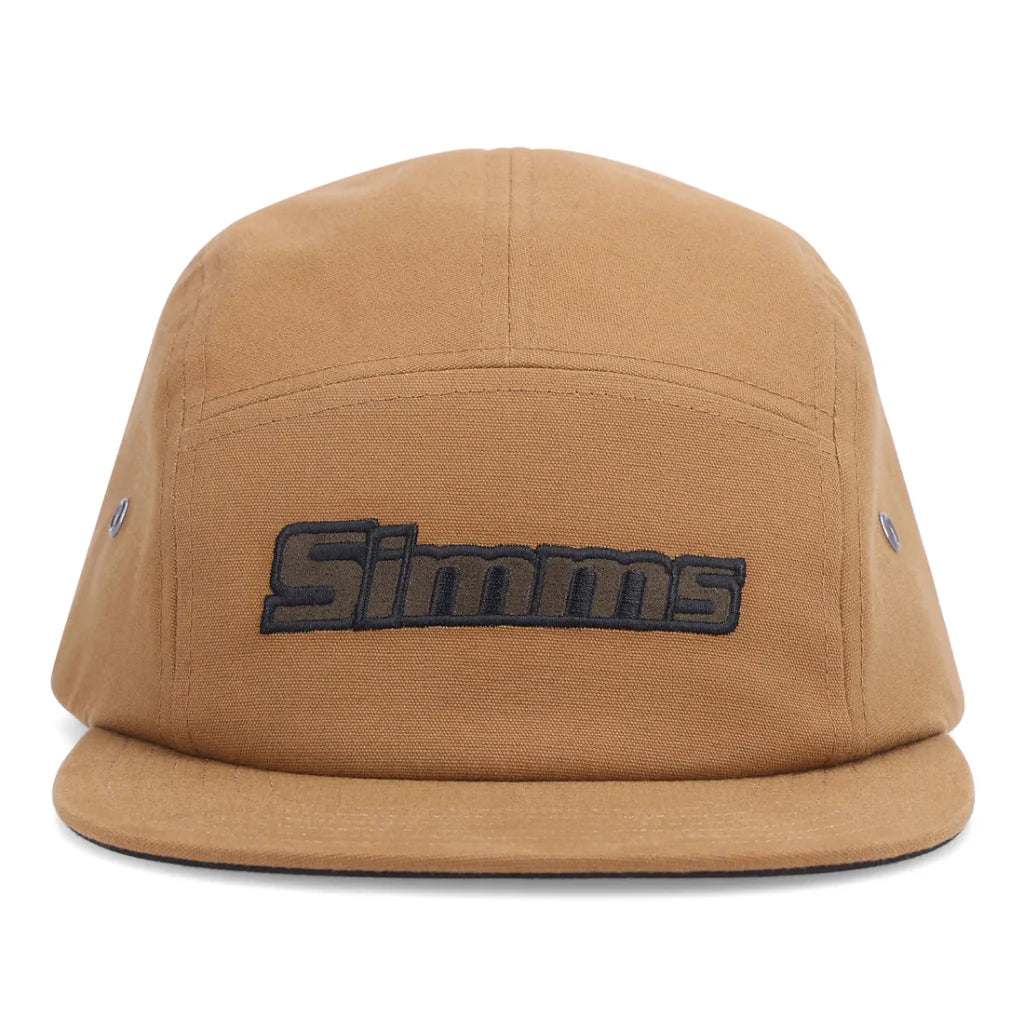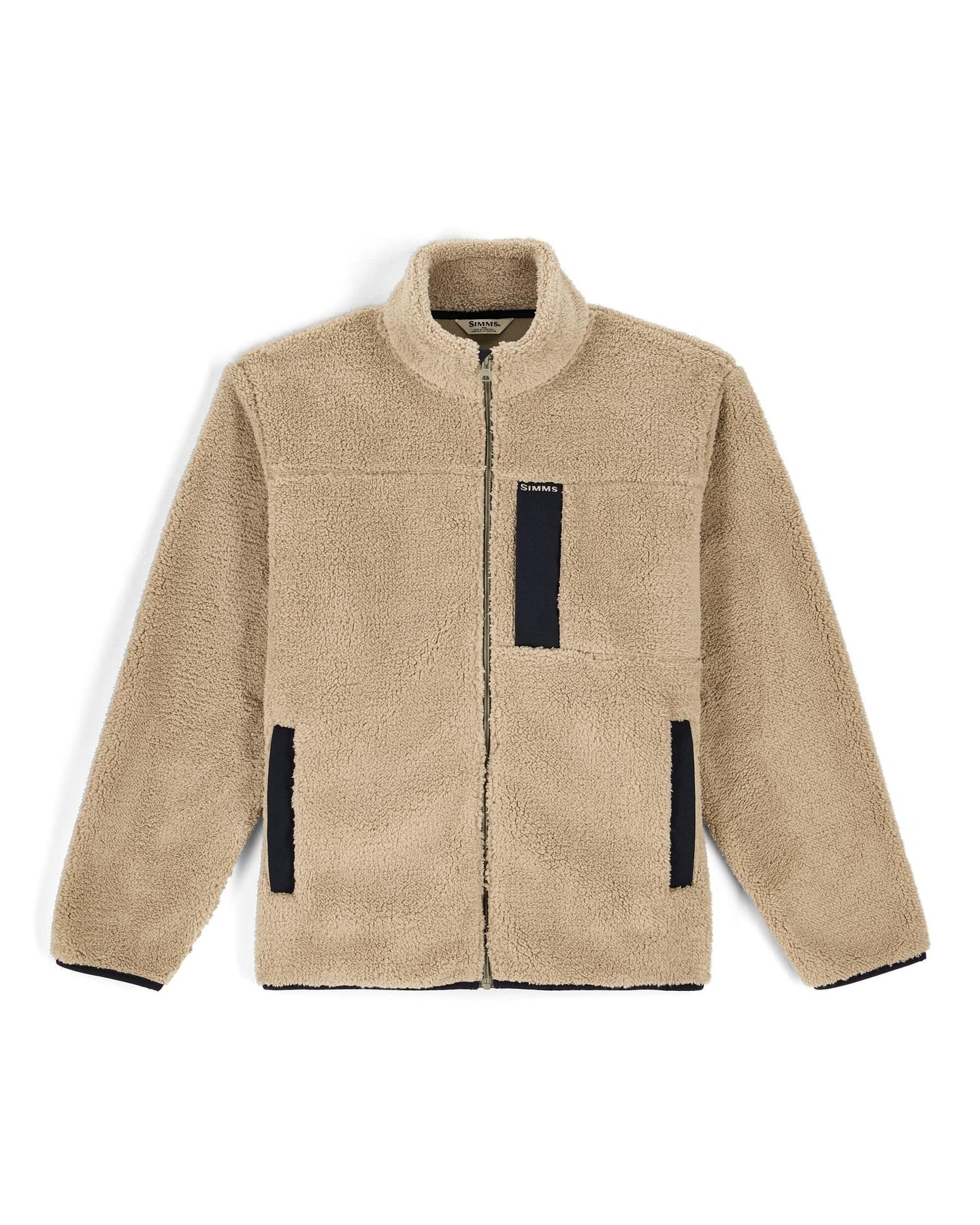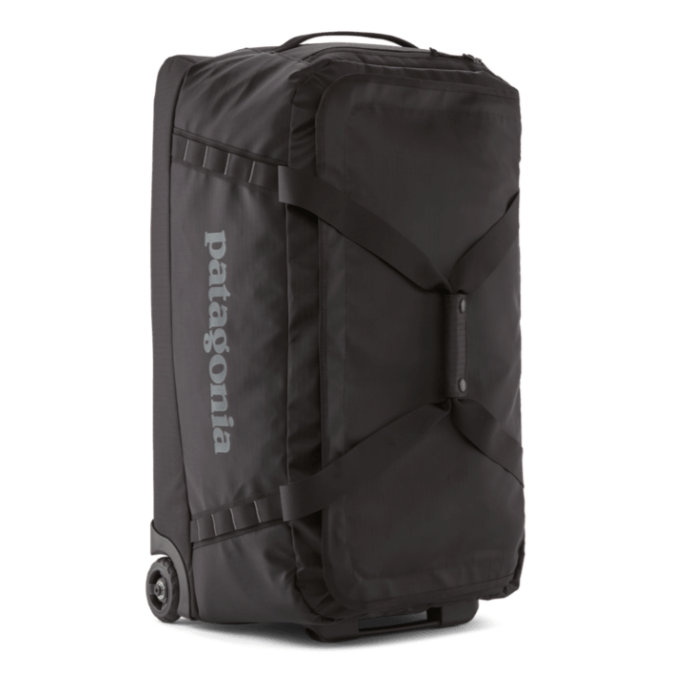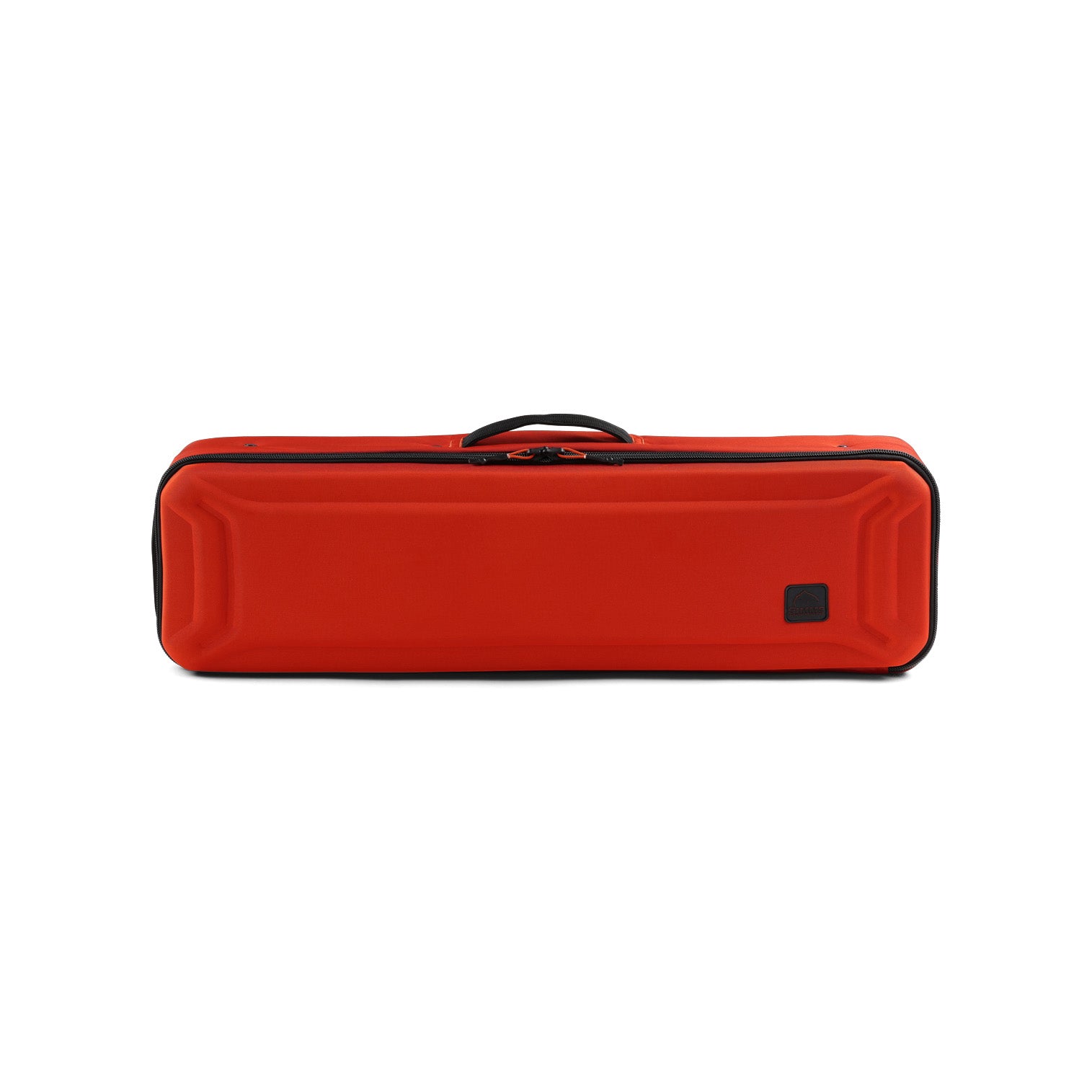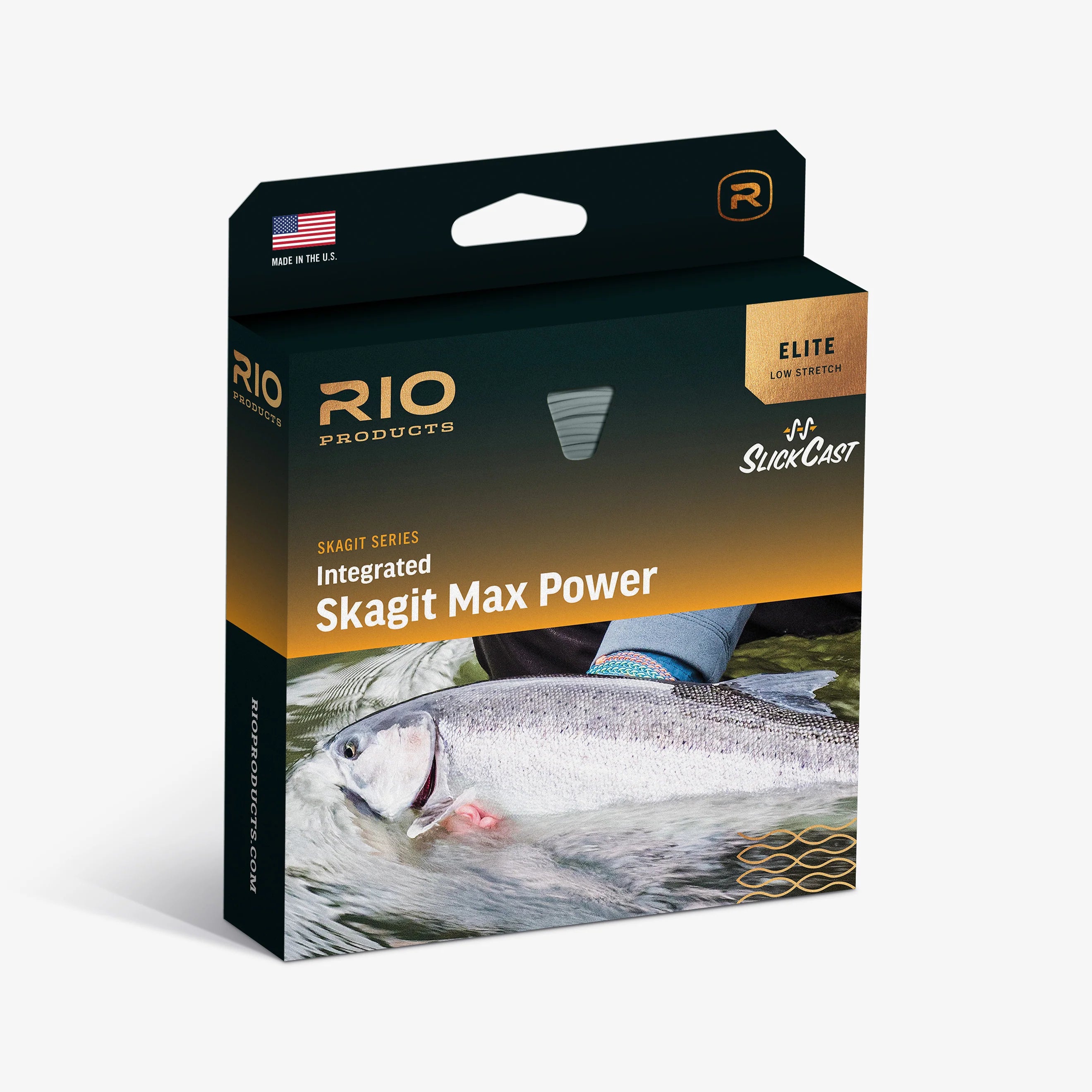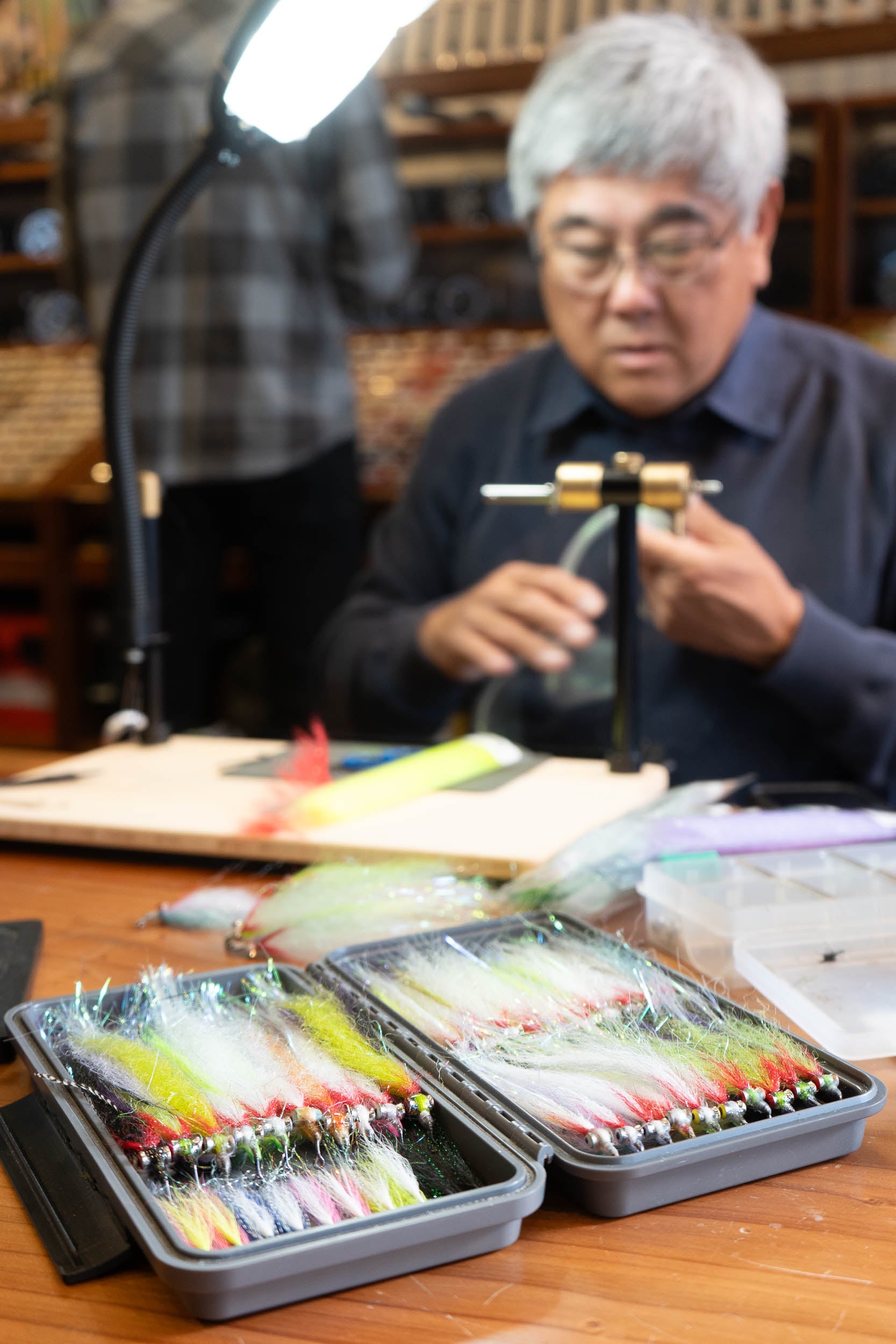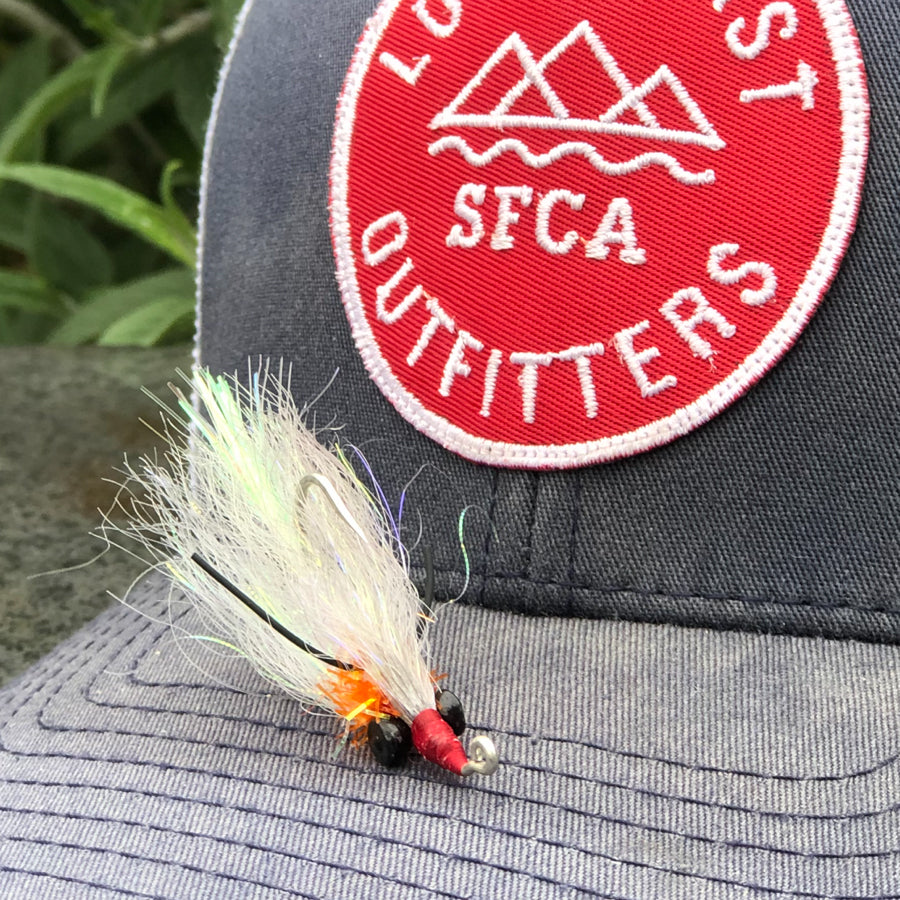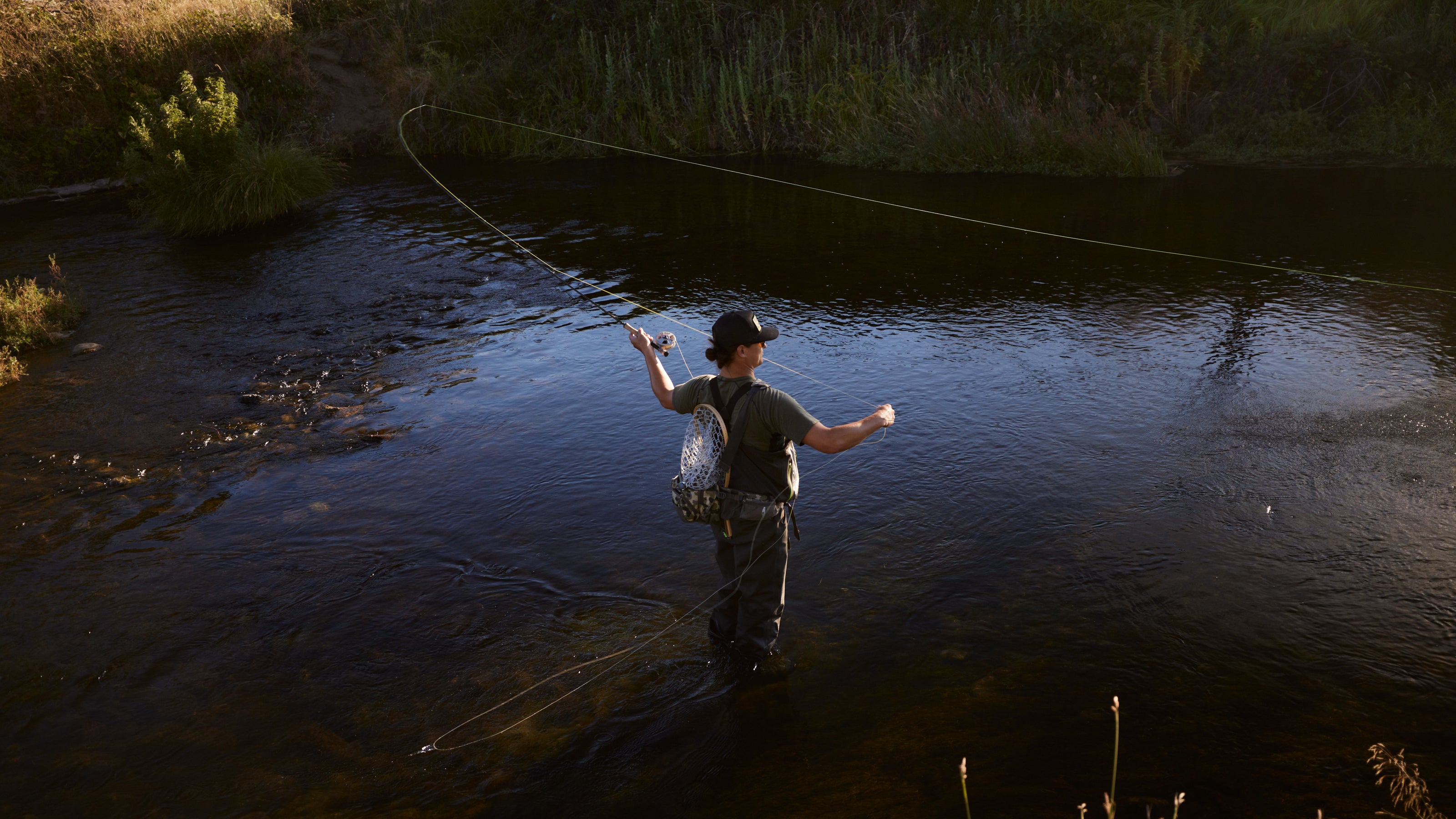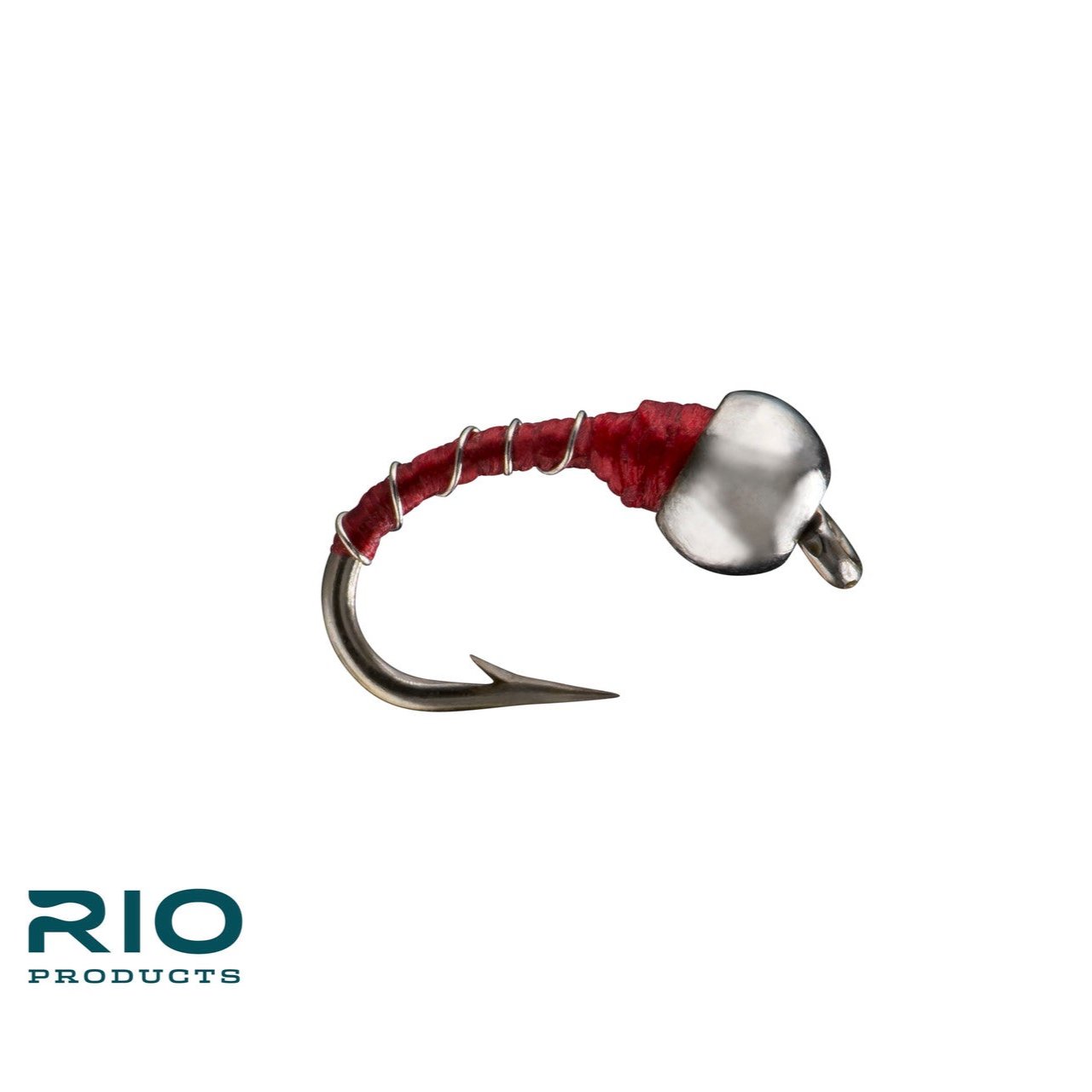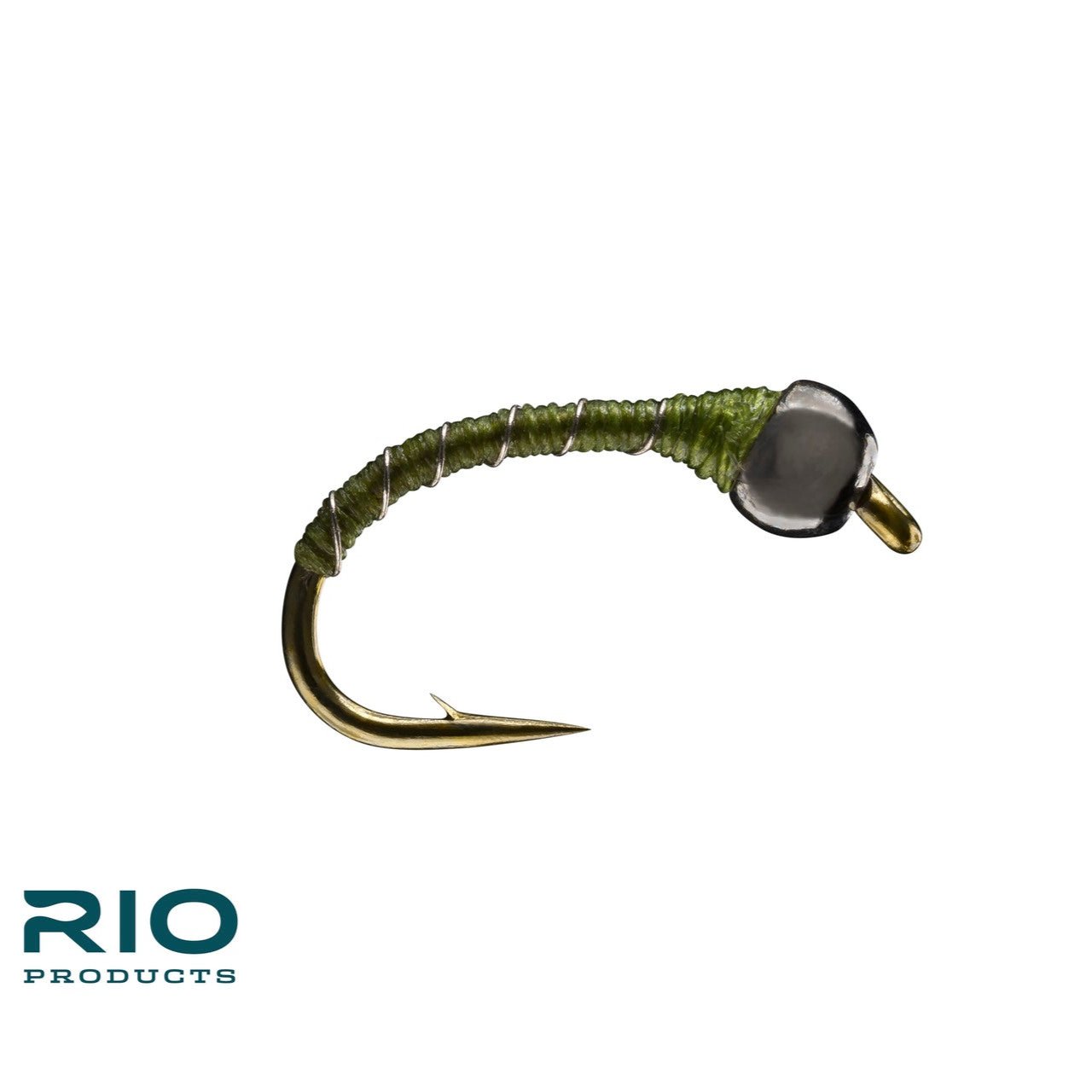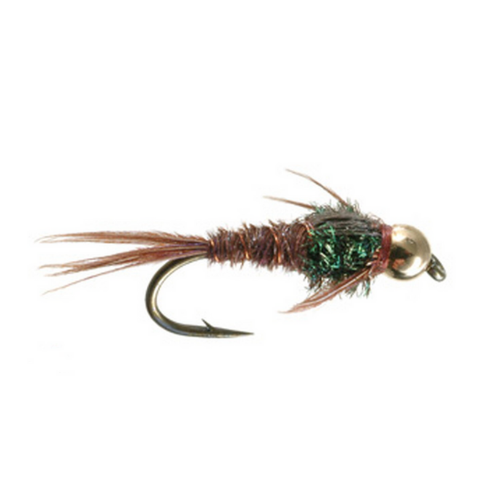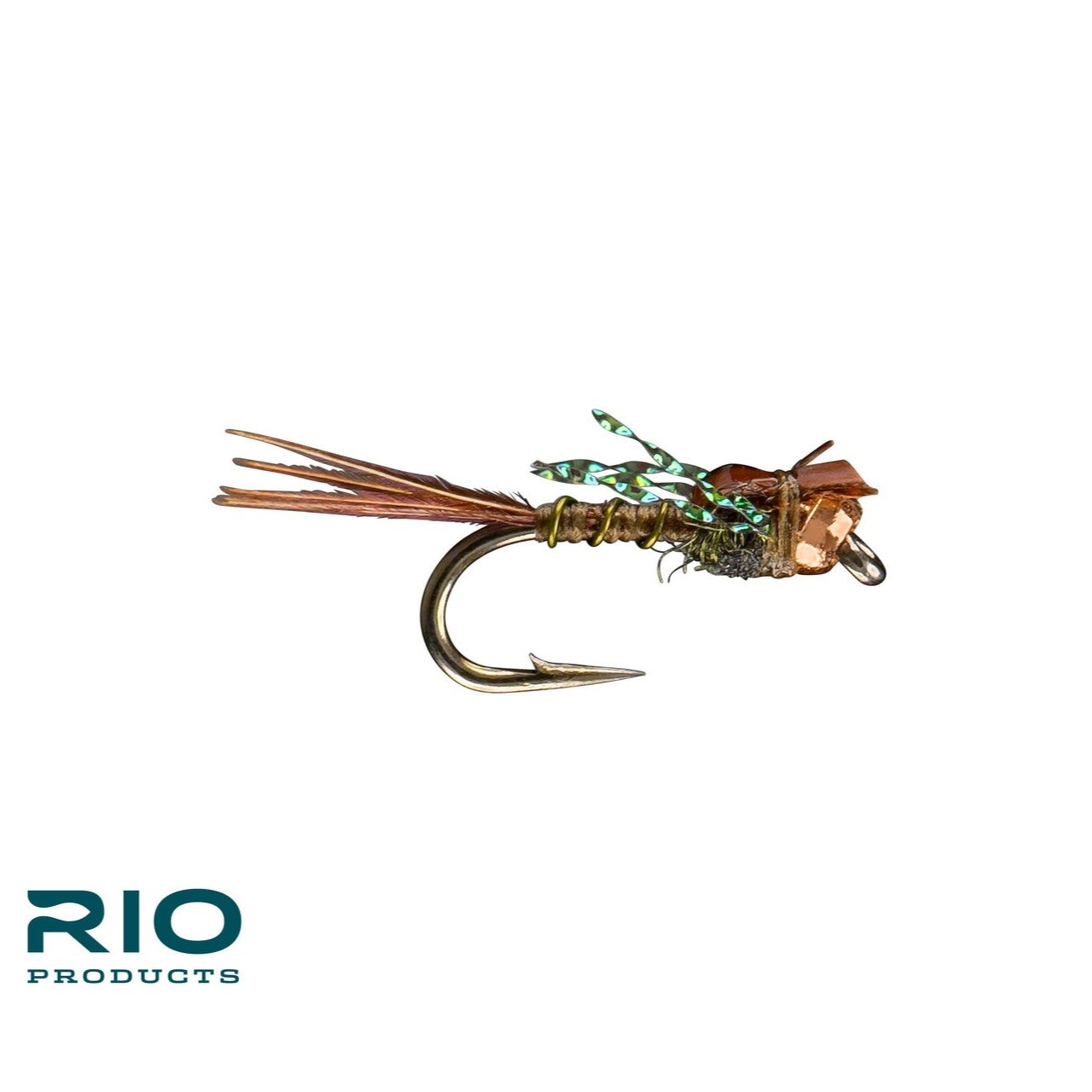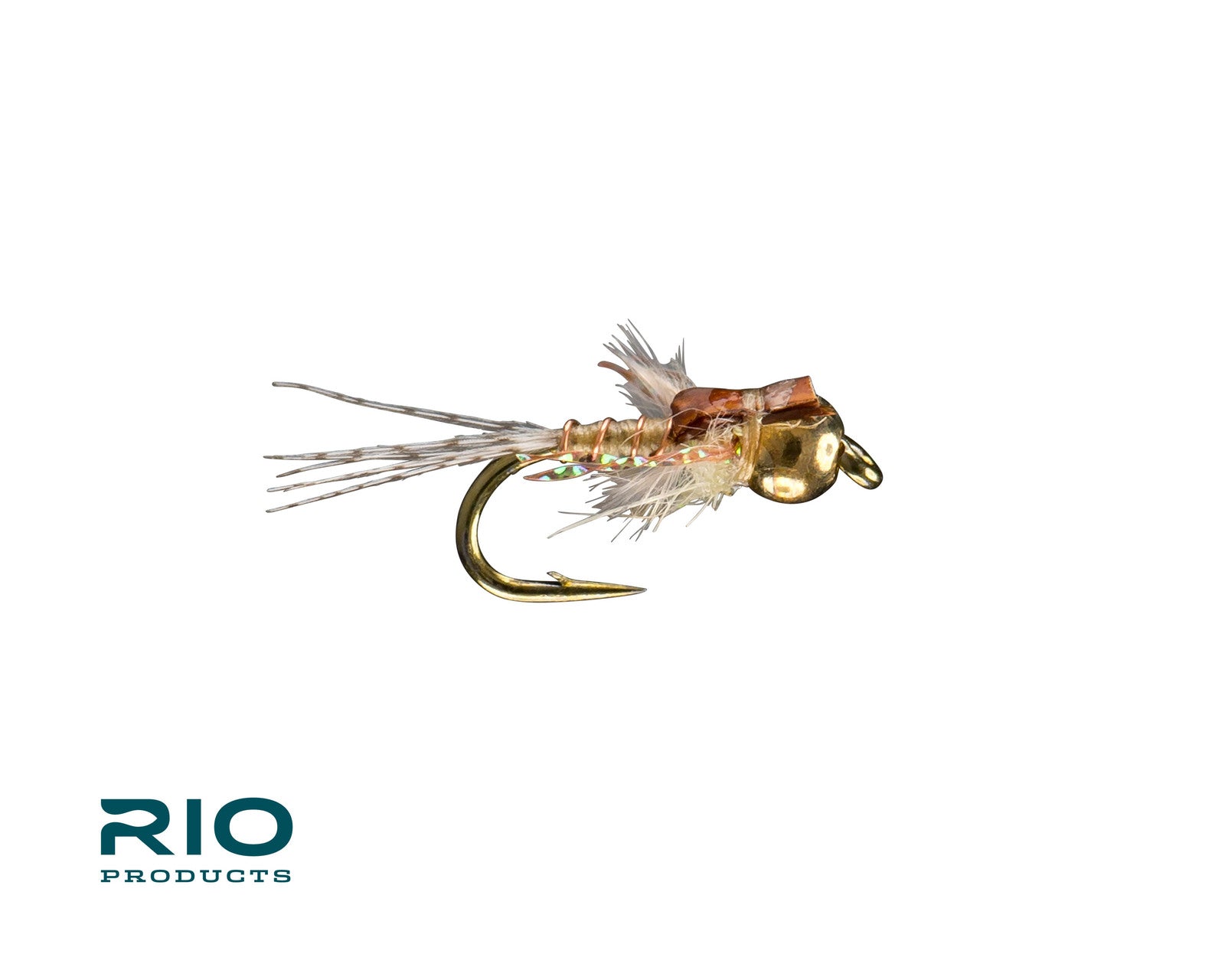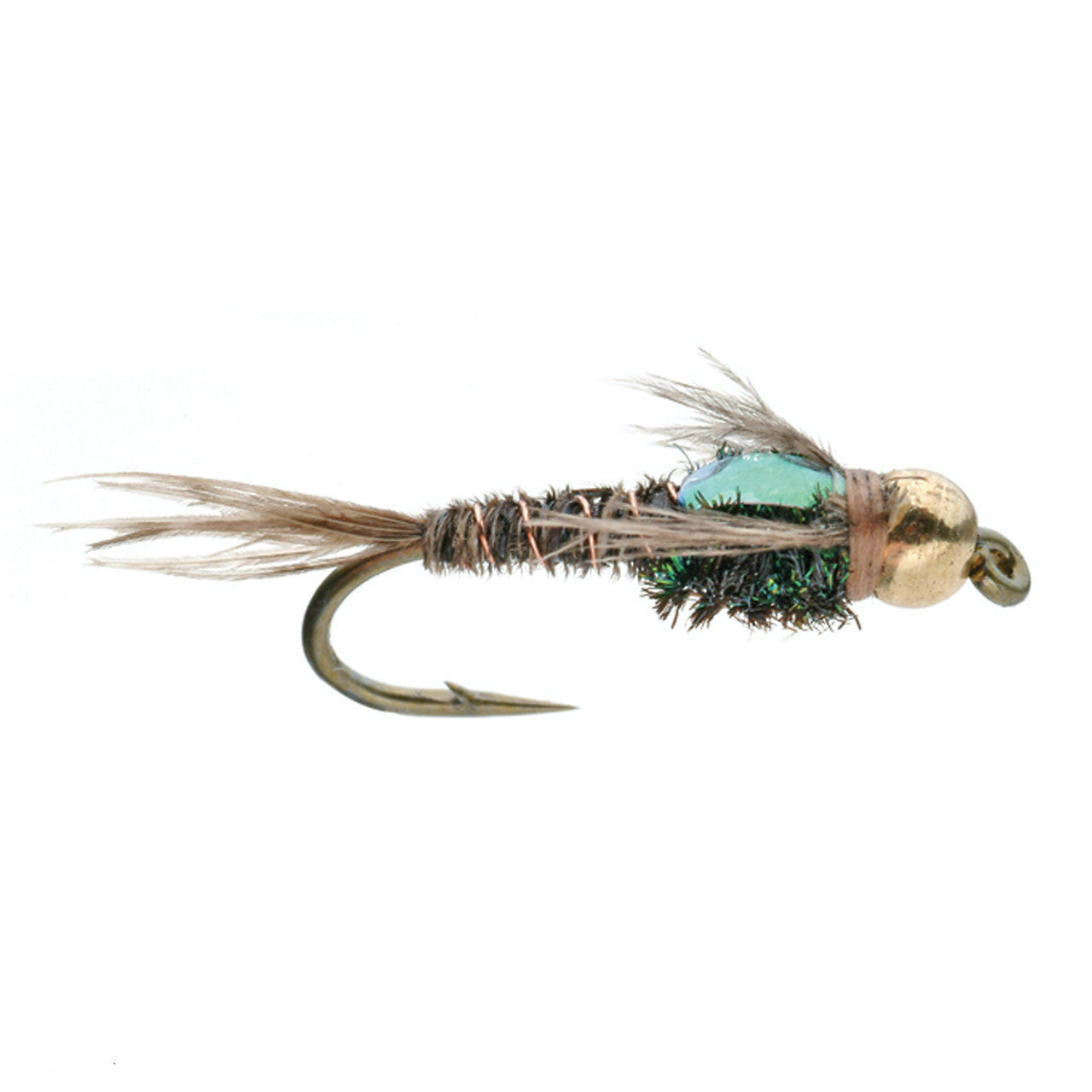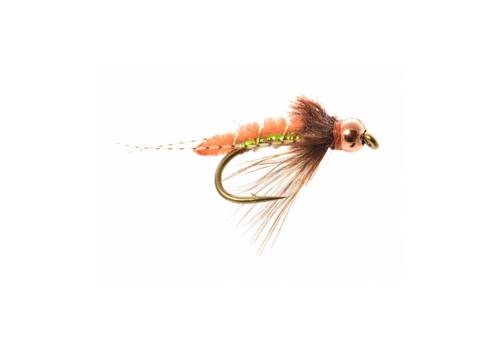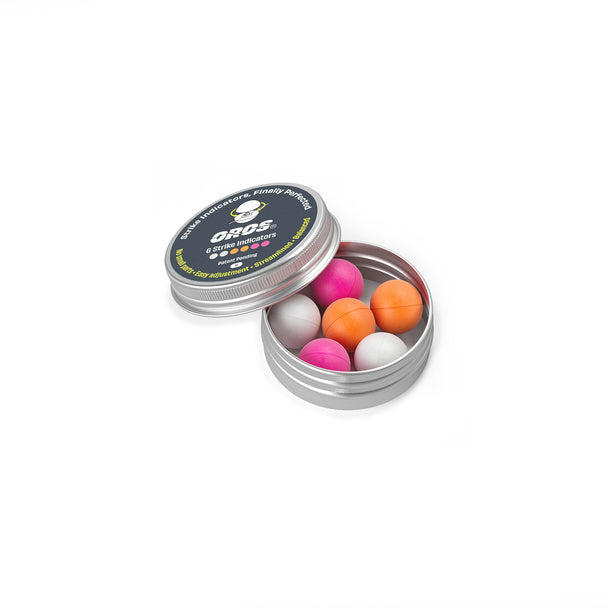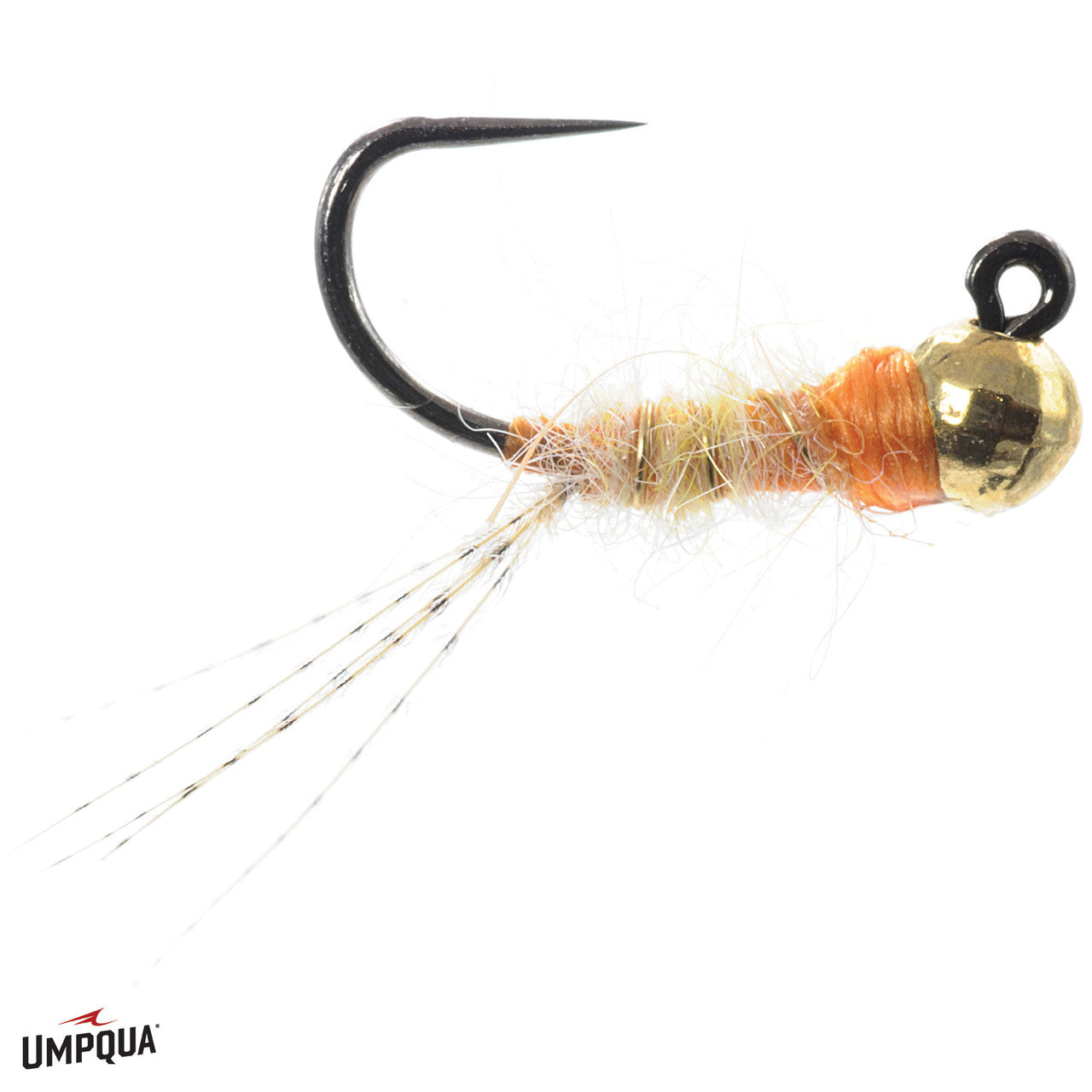If you’re a Bay Area angler, Putah Creek is your most legit trout destination that doesn’t require burning a whole weekend. Just an hour and change from San Francisco, it’s close enough for a day trip — but don’t mistake convenience for compromise. Putah holds some of the largest and most challenging wild rainbows in the West. Seriously.
The fishery begins below Monticello Dam, which backs up Lake Berryessa (a great bass lake in its own right), and winds just four miles through dry, oak-studded canyon country to Lake Solano. The water is clear, weedy, and alternates between glassy calm and fast riffles. Casting can be tough — tight quarters, tiny flies, and light tippet rule the day. The wading’s slick, the banks are brushy, and yes, you’ll want to keep an eye out for rattlesnakes and poison oak.
So why fish it? Because the rewards are incredible. Putah’s trout are wild and native, carrying rare genetic links to the steelhead that once ran from the Pacific up this watershed. That lineage makes every fish here special.
For decades, hatchery stocking muddied that genetic purity — until 2008, when CDFW ended stocking. Two years later, catch-and-release, barbless-only regulations gave the fishery the reset it needed. Since then, the creek has made a strong comeback. “In just the last five years, we’ve seen extreme drought, massive wildfire, and huge flooding — and Putah has fished incredibly well through it all,” says local guide Rob Russell.
Before you go, check flows at the USGS Putah Creek gauge. Fluctuations can dramatically affect wading and fishing conditions.

Lost Coast Outfitters Guide to Putah Creek
What to Know Before You Fish Putah Creek
Putah Creek isn’t your average trout stream — it’s clear, technical, and rewards patience over power. Flows can change quickly, so always check the USGS gauge before heading out. Wading is slick, poison oak is common, and stealth is everything. Long leaders, small flies, and quiet approaches win the day. Respect the voluntary spawning closure (Dec 1–Feb 28) — it’s vital to protecting this wild, recovering fishery.
The Difficulty Rating of Putah Creek: Intermediate
Putah Creek is a sub-surface fishery — it’s rare to see rising fish here. Local guide Jordan Romney, who grew up fishing the creek, puts it plainly:
“Your best bet is a two-fly nymph rig under an indicator, with split shot. It’s the most common way to find fish on Putah. Small bugs on light tippet are key.”
Standard setups use 12-foot leaders tapered with fluorocarbon to 5X or 6X. Some anglers even go down to 7X, but that’s risky — you’ll have a hard time properly playing and landing a big fish on tippet that light. Keep indicators small and positioned high on the leader to avoid spooking trout.
Tight-line and no-indicator dead-drift techniques can be deadly in skilled hands, especially when stealth is part of the presentation. Use split shot in faster, deeper water, but remove it when fishing the flats — heavy plops will spook fish in a heartbeat. Dry-fly fishing is rare; if you see trout rising to mayflies or midges, consider yourself lucky. Tie on a tiny dry and pray.
Stealth is everything on Putah. Walk slowly, stay low, and use the bank for cover. In flat water, crawling into position isn’t overkill. Fishing riffles allow for a little more movement, but quiet feet and a low profile are still mandatory — Putah rainbows are educated fish.
Streamer fishing can also be productive, especially for larger trout. Big fish need calories. A great tactic is to nymph a run first, then work back through it with a small streamer. Trout here will chase sculpins, crawdads, chubs, and leeches, though the brushy banks can make long casts tricky.
Putah isn’t easy — sometimes it’s downright humbling. But it’s also one of the best teachers in Northern California. Approach it as a challenge.
“Apply your most technical skills here and you’ll be rewarded,” says Romney. “Putah Creek is a worthy opponent and rewards hard work.”
Hatches on Putah Creek
Putah Creek boasts a rich insect life — most of it small — and the trout take full advantage, feeding steadily year-round. While seasonal changes do occur, the creek’s stable flows and nutrient-rich water make midges and Blue-Winged Olives (BWOs) the cornerstone of the food chain. Crawdads and baitfish such as sculpins are also ever-present, giving the resident rainbows plenty of protein options.
In spring and summer, you’ll see a variety of caddis and small mayflies in shades of yellow, olive, black, and brown. Stoneflies are virtually absent here, and the largest insects you’ll find are typically spring caddis — olive or tan, up to a #12. Most of the bugs, however, will have you squinting over flies in the #18–22 range.
Primary Hatches & Food Sources:
- Midges — Year-round
- Blue-Winged Olives (BWOs) — Year-round
- Pale Morning Duns (PMDs) — Spring through Summer
- Caddis — Early Spring through Summer
- Crawdads — Year-round
- Baitfish (Sculpins, Chubs) — Year-round
Suggested Fly Patterns:
- Tungsten Zebra Midges (red, black, olive, brown) — #18–22
- Beadhead Pheasant Tail (natural, black, olive) — #16–20
- Soft Hackle Pheasant Tail (natural, black, olive) — #16–20
- Mike Mercer Patterns: Tungsten Psycho May, Trigger Nymph, Micro May (olive, black, purple, red, PMD) — #16–20
- King Prince — #12–16
- WD-40 (red, black, olive, tan) — #18–22
- Beadhead Humpback PMD — #16–18
- RS2 (olive, gray, black) — #18–22
- Craven’s Juju Baetis — #18–20
Tungsten jig-head nymphs are extremely popular on Putah — they sink fast, ride hook-up, and keep you tight to your drift.
Quick Tips for fishing Putah Creek
- Target ideal flows between 100–300 cfs for safe wading and accessible water. It’s still fishable — with caution — up to around 700 cfs.
- Sight-fish whenever possible in calm flats, and blind-fish the riffles and soft seams.
- Strip or swing streamers through the larger pools that are tough to nymph. Big fish live there.
- Wear studded boots — Putah Creek is notoriously slick.
- Bring Tecnu or wipes — poison oak grows thick along the banks.
- Use long leaders and light tippet (5X–6X) for delicate presentations in clear water.
- Respect the voluntary spawning closure from December 1 through February 28 to protect spawning rainbows.
- Drift nymphs naturally along soft current seams and pockets within riffle water.
- Work productive water thoroughly, and change flies often if you’re not getting eats.
- Pack your patience. Putah is challenging, but it rewards anglers who slow down, observe, and adapt.
Rigging Tips
A few handy graphics for getting rigged up for Putah Creek
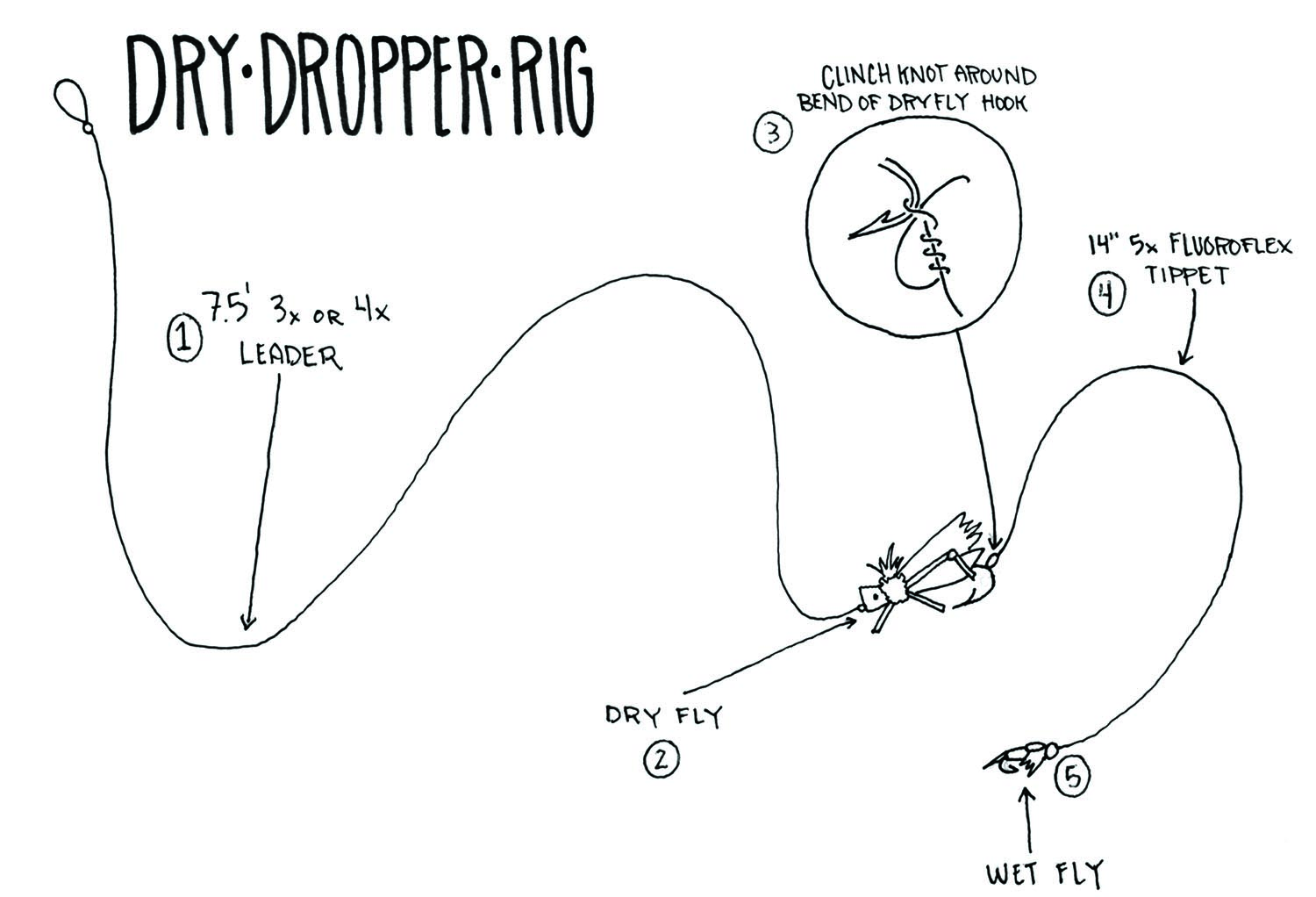
The Dry Dropper
A dry-dropper rig allows you to fish both the surface and subsurface at the same time. Tie a buoyant dry fly to your leader, then attach 18–36 inches of tippet with a small nymph or emerger below. The dry fly acts as both attractor and strike indicator—if it twitches or dips, set the hook. Ideal for riffles, pockets, and mixed-depth water, the dry-dropper is one of the most versatile and practical setups in fly fishing.
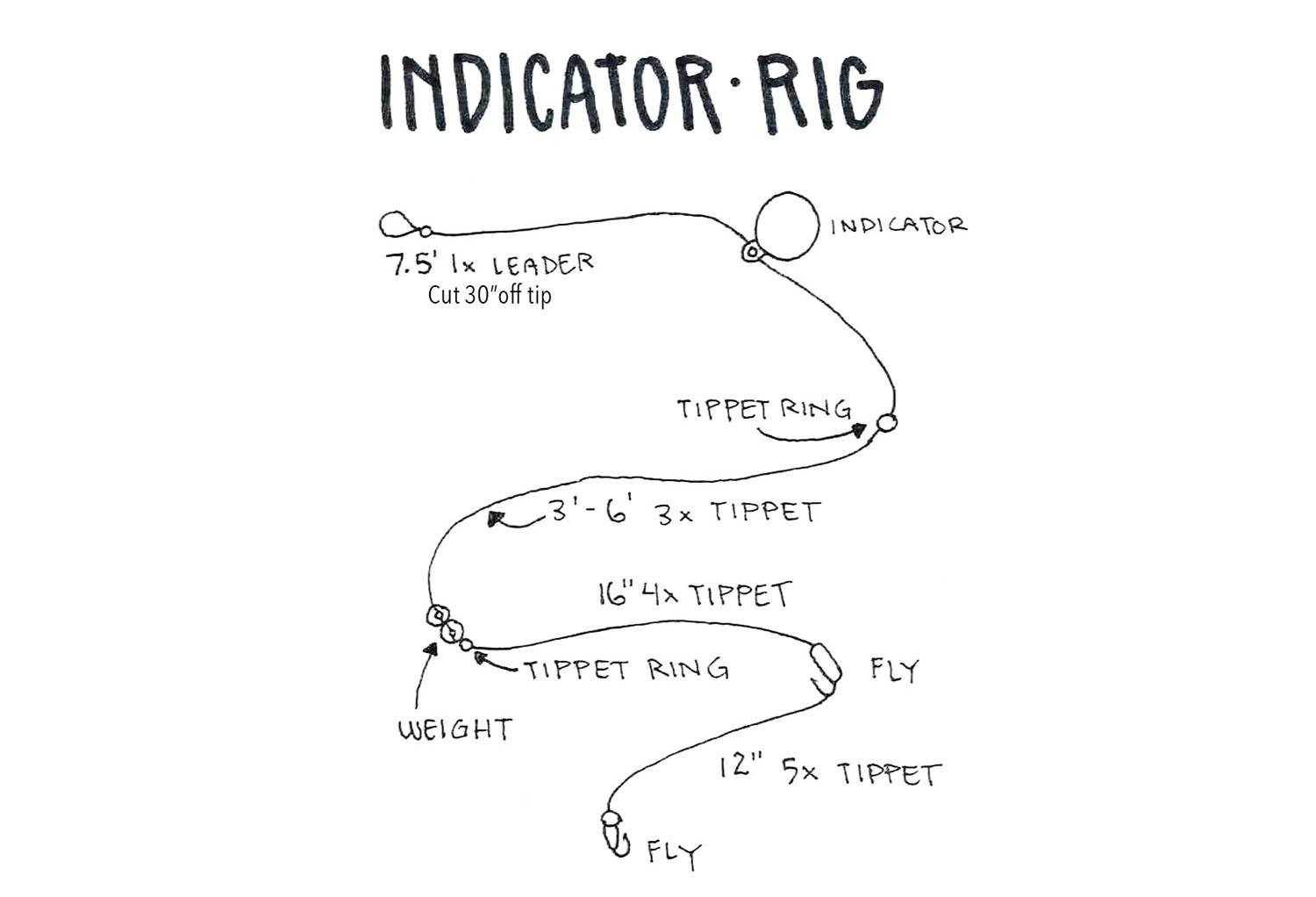
The Indicator Rig
An indicator rig is the go-to setup for nymphing deep or fast water. It uses a floating strike indicator (like a small bobber) to suspend one or more weighted nymphs below, keeping them drifting naturally near the riverbed where trout feed most. When the indicator pauses, dips, or twitches, it signals a strike. Perfect for winter or off-color water, indicator rigs offer precise depth control and consistent hookups — making them a cornerstone of modern trout fishing.

Tightline Nymph Rig
A tightline nymph rig—also known as a Euro or contact nymphing setup—eliminates the indicator and keeps you directly connected to your flies. Using a long, light leader with a sighter (a bright, high-visibility section), this rig allows you to feel subtle takes and control depth with precision. Weighted flies provide tension and contact, allowing for perfect drifts through seams and pockets. Ideal for clear water and technical trout, tightline nymphing delivers unmatched sensitivity and strike detection.
Our Favorite Rods
For fishing Putah Creek, we recommend bringing two rods: a 10' 4wt for nymphing and light dry-fly work, and a 9' 5wt for slightly heavier rigs or windy days. Putah is small, clear, and technical—demanding accuracy, finesse, and perfect drifts—and these two setups cover every situation the creek can throw at you.
Going all the way back to the ’80s, anglers on Northern California classics like the McCloud, Upper Sacramento, and Putah have reached for a 10’ 4wt for one simple reason: reach and control. That extra foot helps you keep line off the water, make longer mends, and stay connected to subtle takes in tricky currents. Most anglers overline this rod with a 5wt line for better roll casting and turnover in tight spaces.
For heavier nymph rigs or small streamers, the 9' 5wt gives you just enough backbone without overpowering the delicate presentations Putah requires. Together, these rods let you fish the creek from top to bottom—tight-lining through deep slots, swinging soft hackles through transitions, or dropping tiny dries to rising fish in slow, glassy runs.
Applications: Indicator or Tight-Line Nymphing, Dry Fly Fishing, Swinging Soft Hackles, Light Streamer Fishing
Pro Tip: Experience the power of ten — once you fish a 10’ 4wt on Putah, you’ll see why it’s the secret weapon for NorCal’s most technical trout water.
Featured Putah Creek Fly Rod
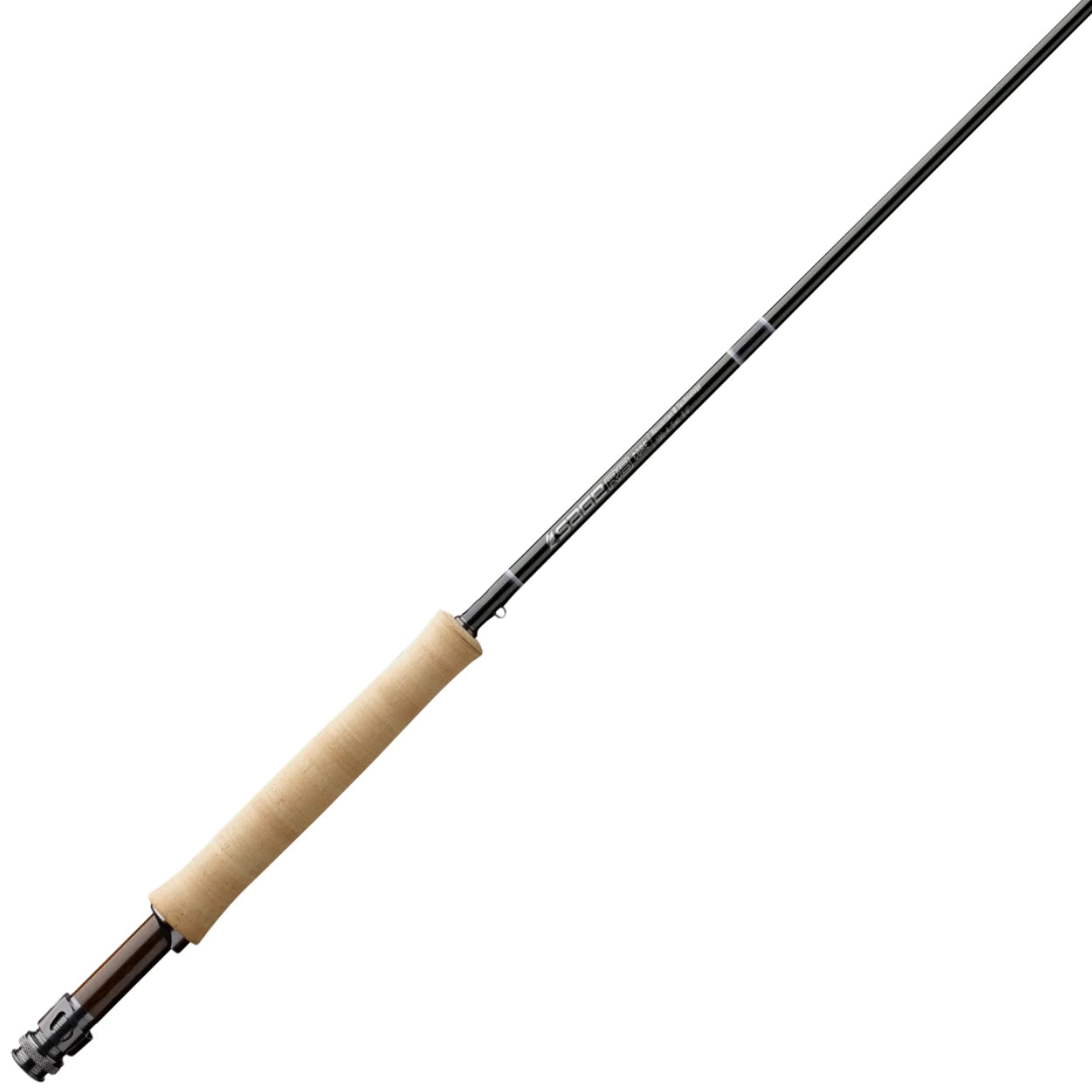
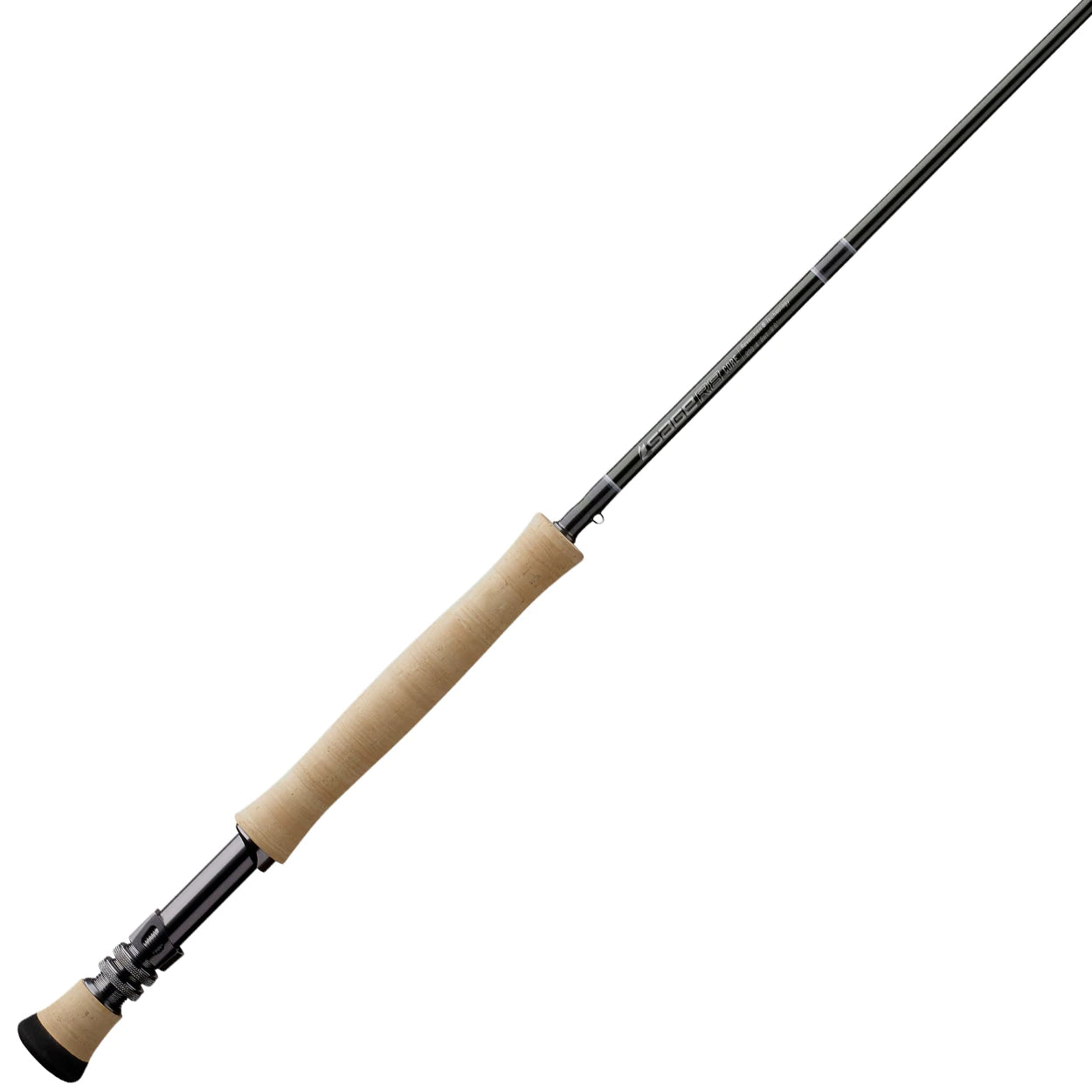
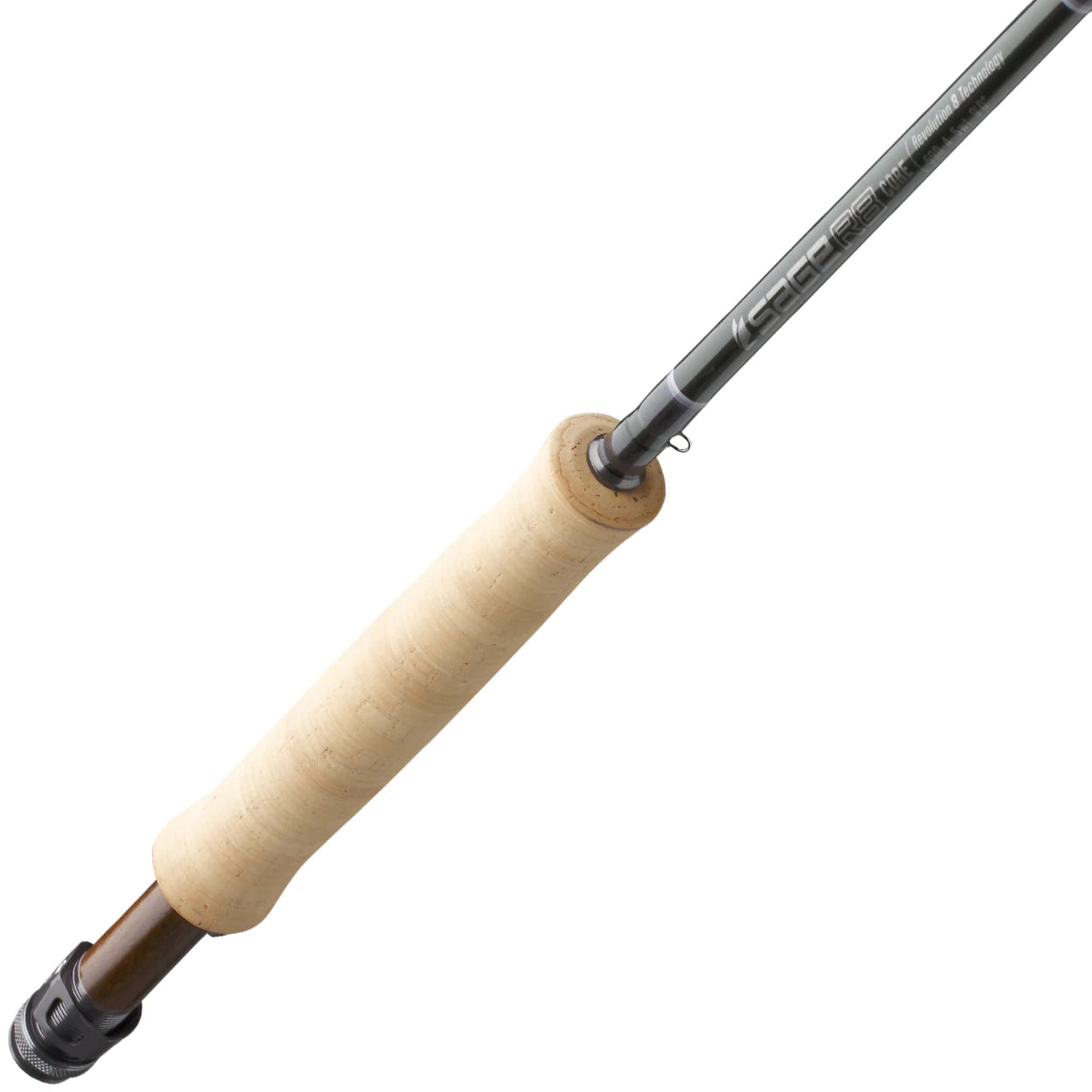
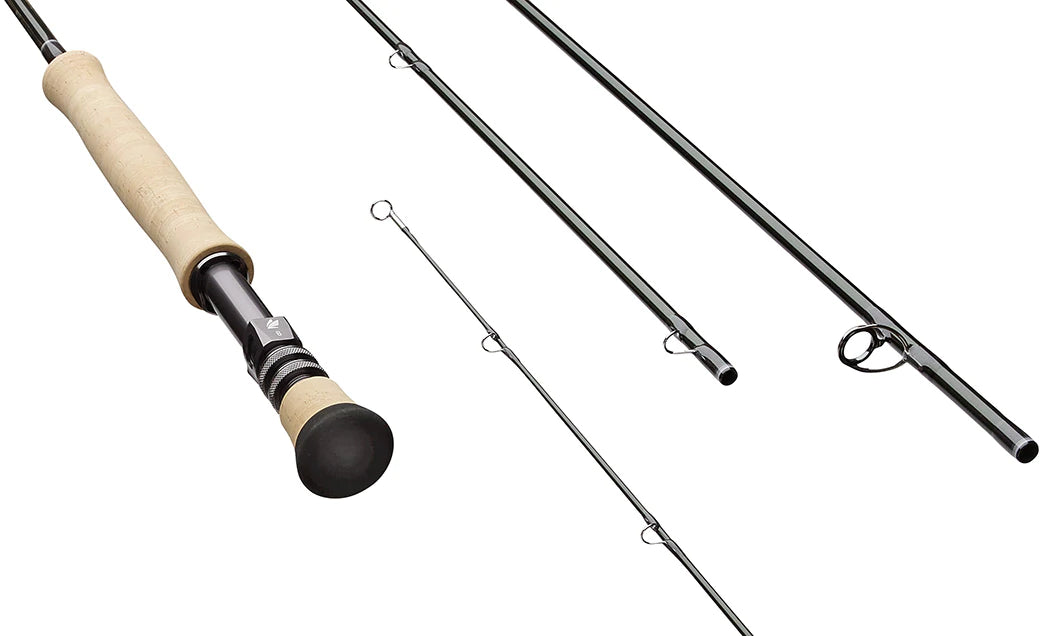
Description
MULTI-APPLICATION / FAST ACTION For most of us, an idyllic day on the water is not when we’re thinking more, but when we’re thinking less. Finding that state of fishing in the moment, where instinct and experience bring us to an almost zen-like awareness of each subtle motion and movement—that’s what R8 CORE is all about. It’s not a race or a competition, but a state we all aim to reach out on the water. With R8 CORE we enhance that two-way connection from hand to fly and back for greater feel, flow and control. This Amplified Two-Way Feedback Loop, due to our new axial fiber formulation, allows you to feel when the power needs to be applied throughout the cast, presentation, and when applying the appropriate pressure to fish - ultimately giving you the angler Complete Control.
R8 CORE is focused on maximum versatility and applies new revolutionary material technology through our forward-thinking lens of what we’re seeing out on the water, where one rod needs to show even greater range. At its core, R8 CORE traces a direct lineage to Sage’s multi-application vision, one shaped by the fishing evolutions happening all around us—from habitats we stalk and waters we frequent, to the flies we fish and the diversity of species we now target.
COMPLETE CONTROL
• Effortless Energy Transfer and More Connected Feel
• Maximized Versatility & Control
• Made to Fish, Not Just Cast
FEATURES
- Revolution 8 Technology
- Silver Pine blank color
- Slate primary thread wraps with graduated White and Grey trim
- Fuji ceramic stripper guides with hard chromed snake guides and tip-top
- Black rod bag with new cord lock for quicker, easier, and cleaner storage
- Aluminium rod tube with Sage medallion 3wt - 6wt
- Sustainable Ziricote wood insert with anodized aluminum up-locking reel seat
- Premium Flor grade snub-nose half-wells cork handle 5wt - 9wt
- Corrosion resistant anodized aluminum reel seat
- Premium Flor grade full-wells cork handle with cork/EVA fighting butt
- Integrated “hidden” reel seat hook keeper
Pickup available at 540 Jackson St
Usually ready in 1 hour

Sage R8 Fly Rod
9' 3wt
540 Jackson St
540 Jackson St
San Francisco CA 94133
United States
Putah Creek Resources
Learn more about where to stay, and local fishing regulations on Putah Creek

Camping and Lodging for Fly Fishing Putah Creek
Camping & Camp-Resort Options
Canyon Creek Resort (Winters, CA)
Tucked into oak-studded hills just minutes from downtown Winters, Canyon Creek is one of the most convenient basecamps for fishing Putah. It’s quiet, clean, and family-friendly, with shaded sites and easy creek access for an evening cast.
- Right on the banks of Putah Creek below Lake Berryessa.
- Offers RV and tent sites, cabins, and waterfront camping.
- Group tent campsite available (fits up to 10 guests, 3 large tents, 2 vehicles).
Putah Canyon Campground (Lake Berryessa / Napa County)
Located along the upper end of Putah Creek where it flows into Lake Berryessa, this large, open campground offers a classic foothill setting with big views and quick access to fishing and hiking. Perfect for anglers looking to stay close to the water but still have amenities nearby.
- 160 campsites (tent and RV) open year-round.
- Many sites provide water access; amenities include vault toilets, drinking water, and a dump station.
- Sites accommodate tents, trailers, RVs (up to ~38 ft in some spots).
Lake Solano County Park & Campground
Downstream from the main fishery, Lake Solano Park offers peaceful camping beneath valley oaks and plenty of open space for families. It’s a good option for those who want easy access to the lower creek or a relaxed weekend near Winters.
- RV and tent camping, day-use area, access to Putah Creek (non-motorized boating).
Hotels & Inns
Hotel Winters — Upscale boutique hotel in downtown Winters. 78 oversized rooms, spa, rooftop bar, and a central location near dining and wineries. Ideal for couples or anyone looking to mix a fishing trip with great food and a little luxury.
Abbey House Inn — A charming, restored 1905 home in historic downtown Winters. Quiet, elegant, and steps from restaurants, shops, and the creek. A favorite for anglers seeking comfort and local character after a day on the water.
Inn at Park Winters — Romantic, boutique-style bed & breakfast in a restored 1865 farmhouse with a peaceful country setting. Just a short drive from Putah, it’s perfect for a relaxed weekend getaway combining fishing, wine tasting, and rural charm.

Putah Creek Fishing Regulations
- These are the regs as of 2025
- Putah Creek is open year-round
- Fish Barbless
- Catch and Release only
- Pick up your garbage and be a good person; also, please pick up any trash you see.

The Town of Winters
Population: 7,825
Fishing: Putah Creek
The Local Fly Shop: If you’re heading to Putah Creek, skip the search for a local shop and swing by Lost Coast Outfitters instead. Our team includes several anglers with years of experience on this water, and we’ll make sure you’re fully dialed—from flies and rigging to gear and local insight.
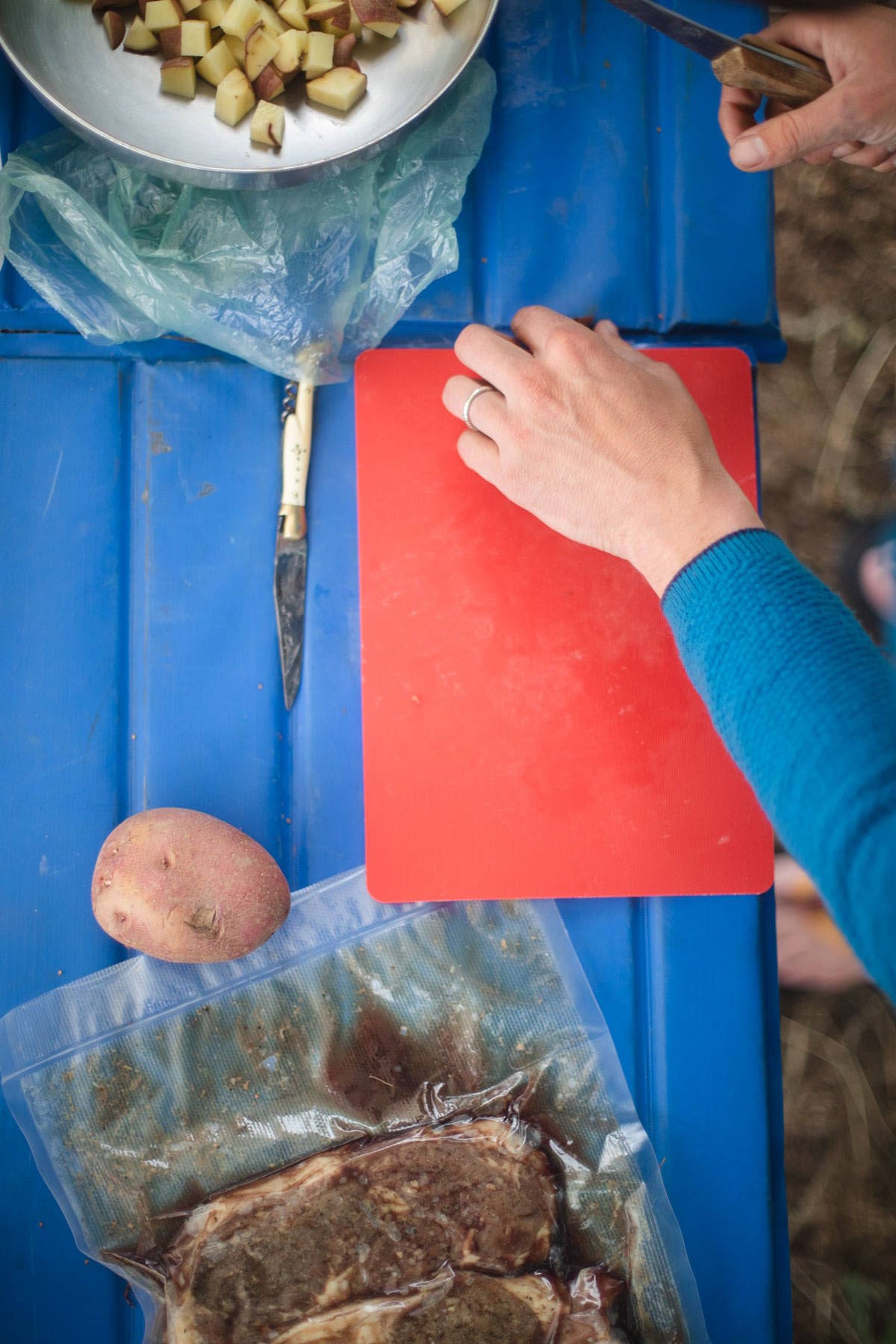
The Town of Winters
Low-Key & Easy
Steady Eddy’s Coffee House – The go-to morning stop before heading up Highway 128. Great coffee, breakfast burritos, and friendly vibes. A local hangout for cyclists, farmers, and anglers alike.
Putah Creek Café – Winters’ classic diner and community hub. Known for hearty breakfasts, stacked burgers, and homemade pies. Grab a seat on the patio and fuel up before or after a day on the creek.
Burgers and Such!
Buckhorn Steakhouse – A legendary spot that helped put Winters on the map. Famous for tri-tip, juicy burgers, and a relaxed Western atmosphere. Perfect after a long day on the water.
Preserve Public House – Elevated pub fare in a historic brick building downtown. Burgers, sandwiches, and salads paired with local beer and wine. Lively but still laid-back.
The Date Spot!
Carboni’s Ristorante Bar & Marketplace – Stylish and modern with wood-fired pizzas, handmade pasta, and a full bar. Great cocktails, warm lighting, and an easy walk from the Hotel Winters.
Turkovich Family Wines & Tasting Room – Not a restaurant per se, but a lovely spot for small plates, local cheese, and a glass of estate wine before dinner. Ideal for unwinding after a long day in waders.
Mexican Food
Chuy’s Taqueria – Local favorite for quick, authentic tacos and burritos. Big portions, fair prices, and fast service — just what you want after hours on the creek.
El Verduzco Taco Truck – Parked near downtown and open late on weekends. Killer carne asada and al pastor tacos — no frills, just flavor.

